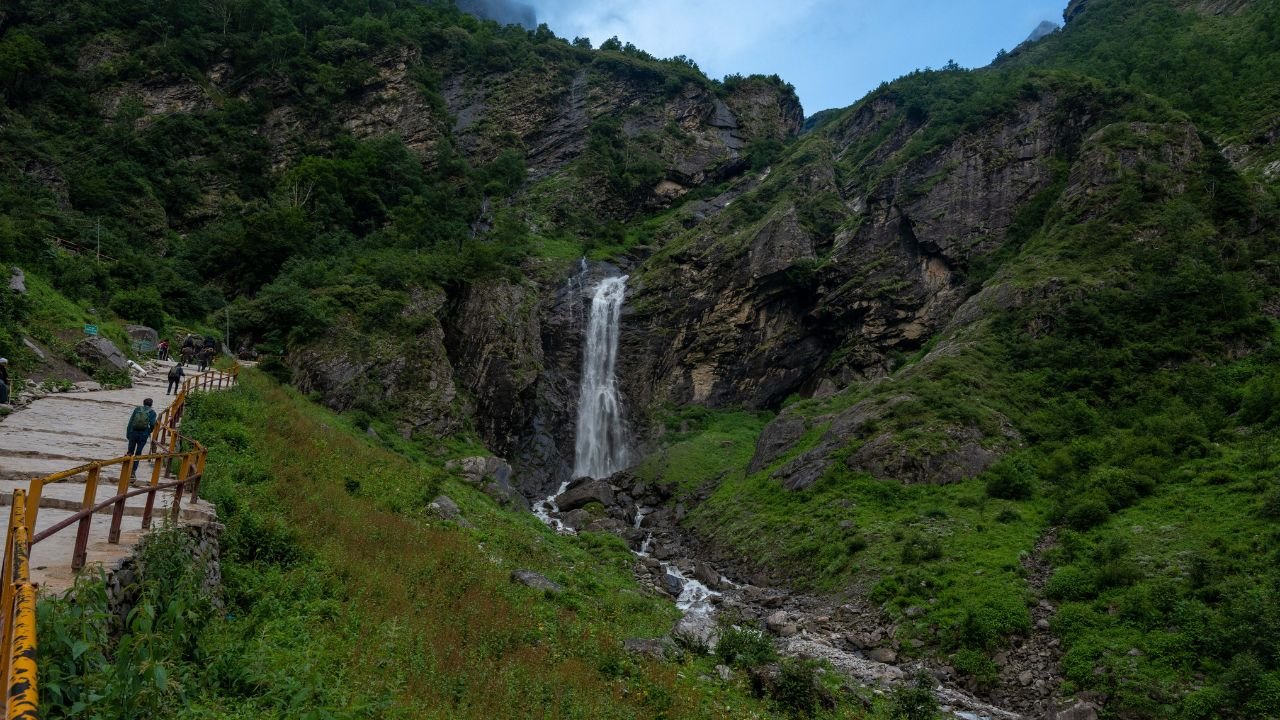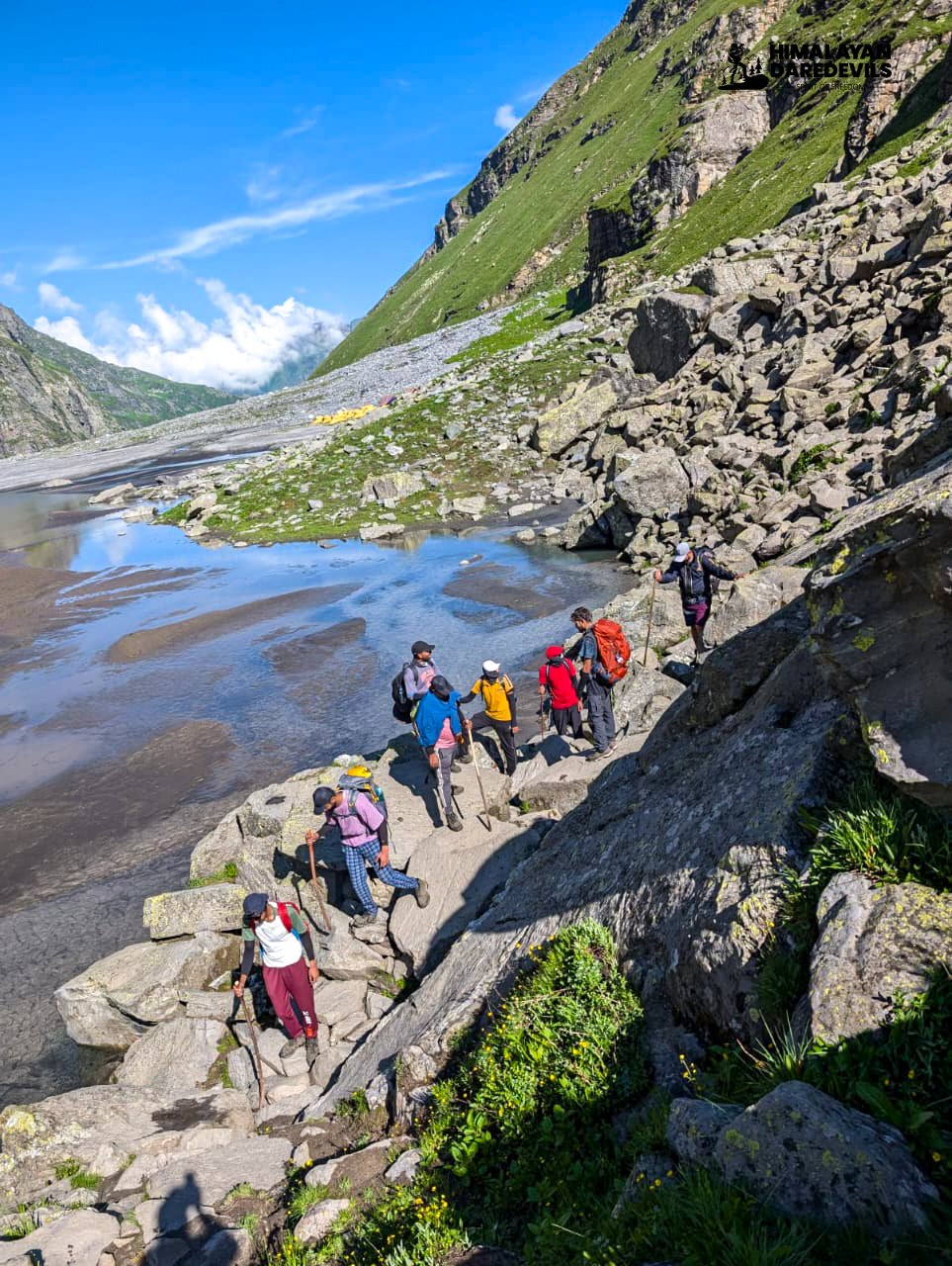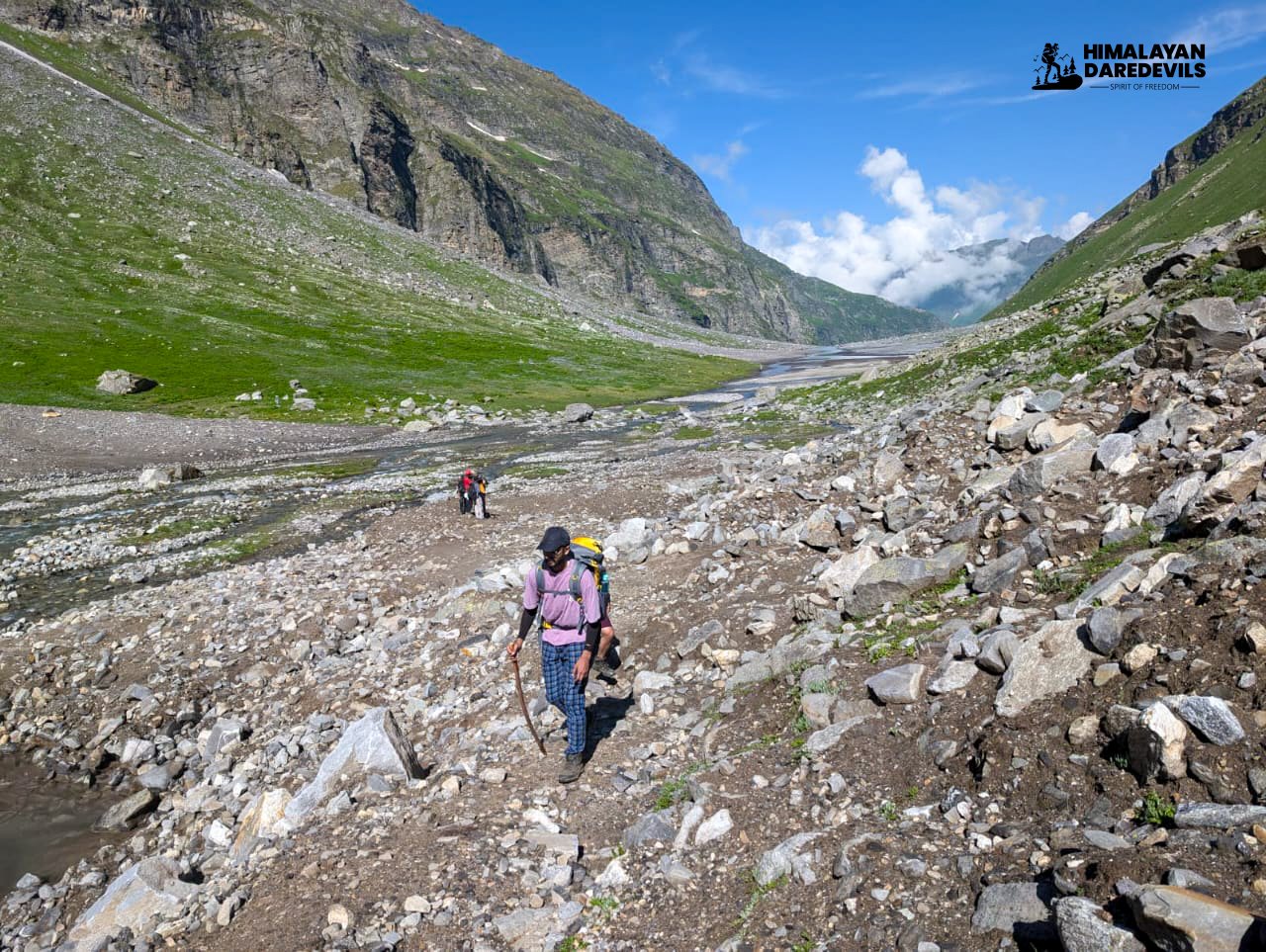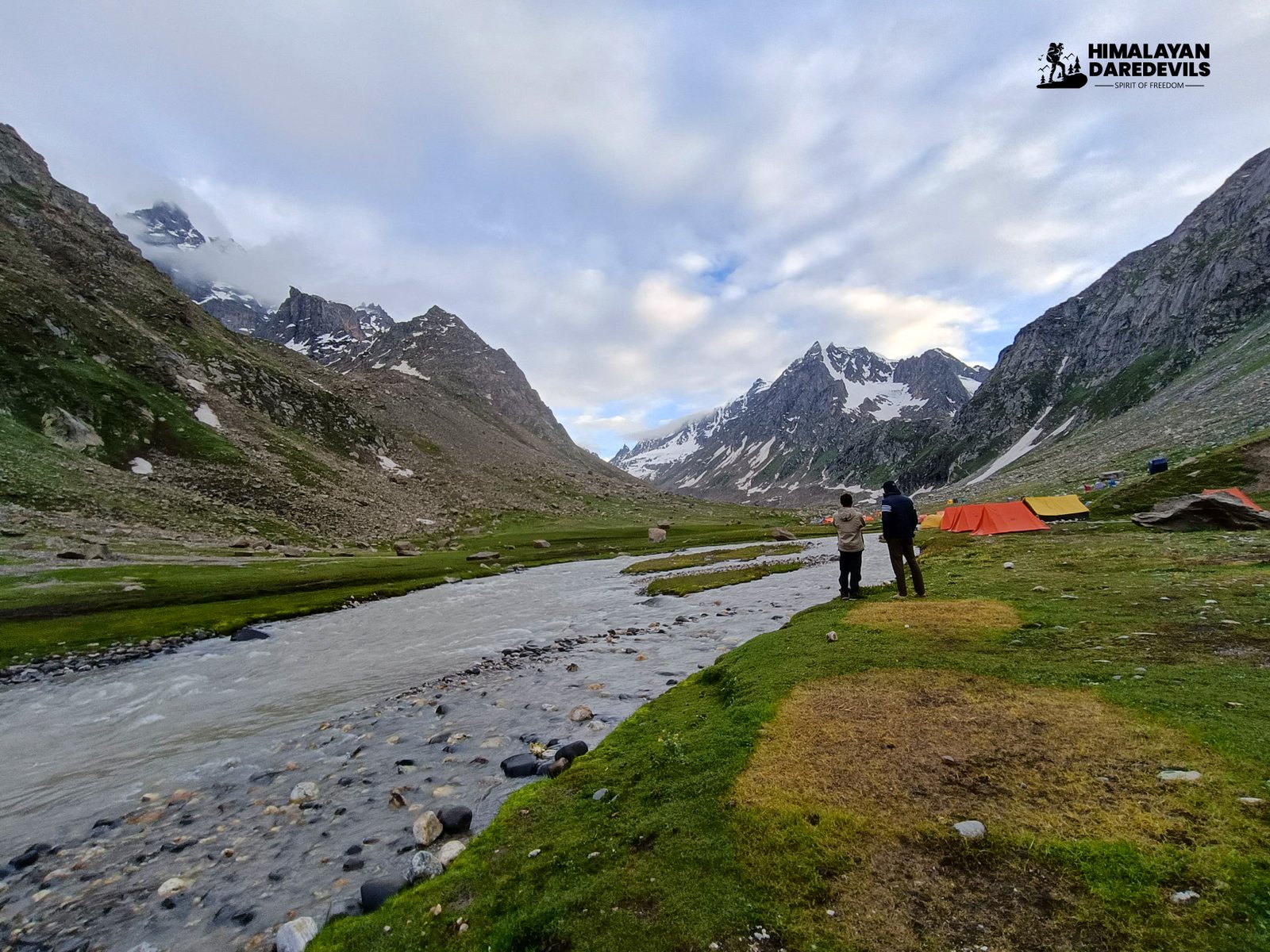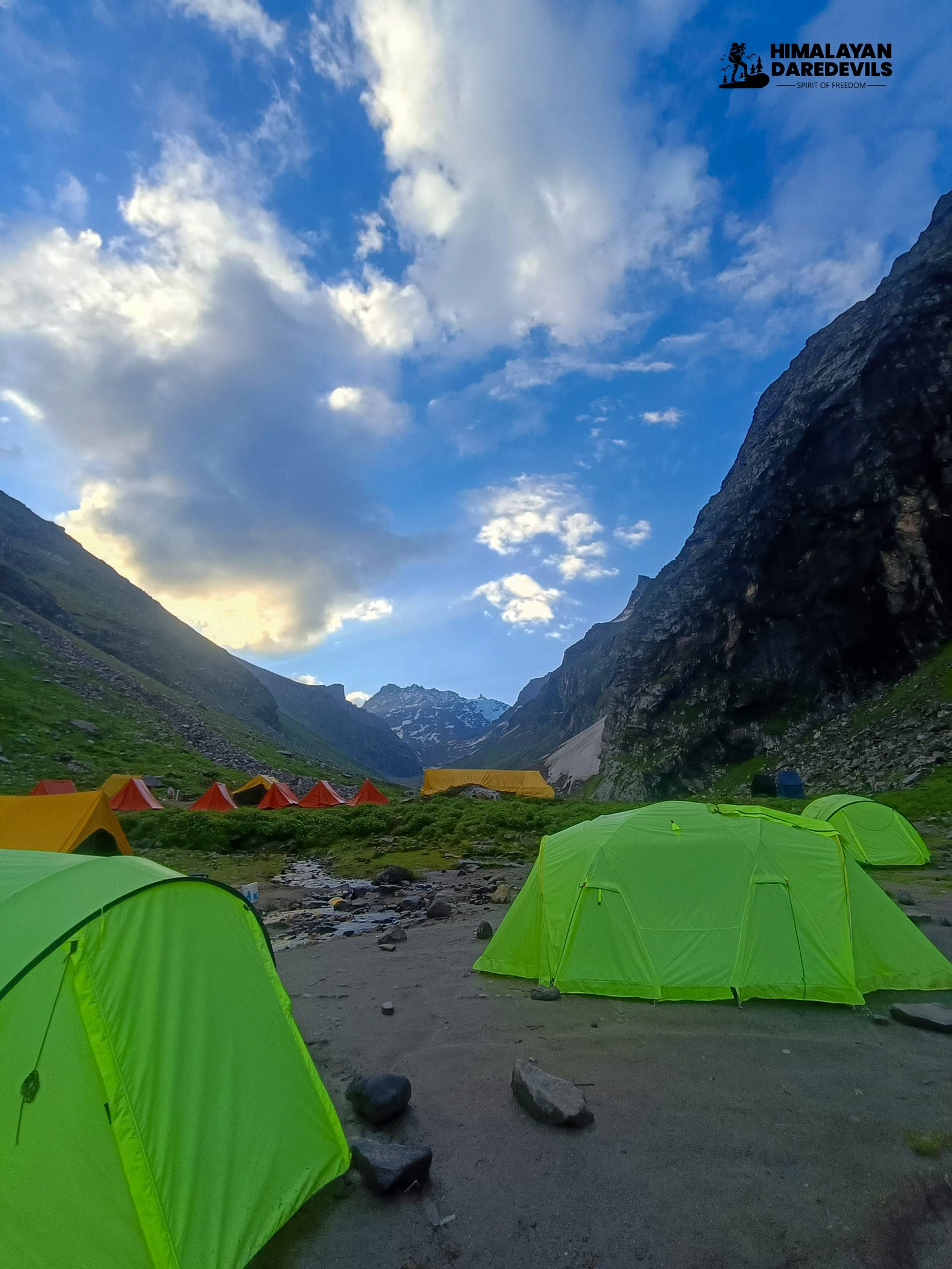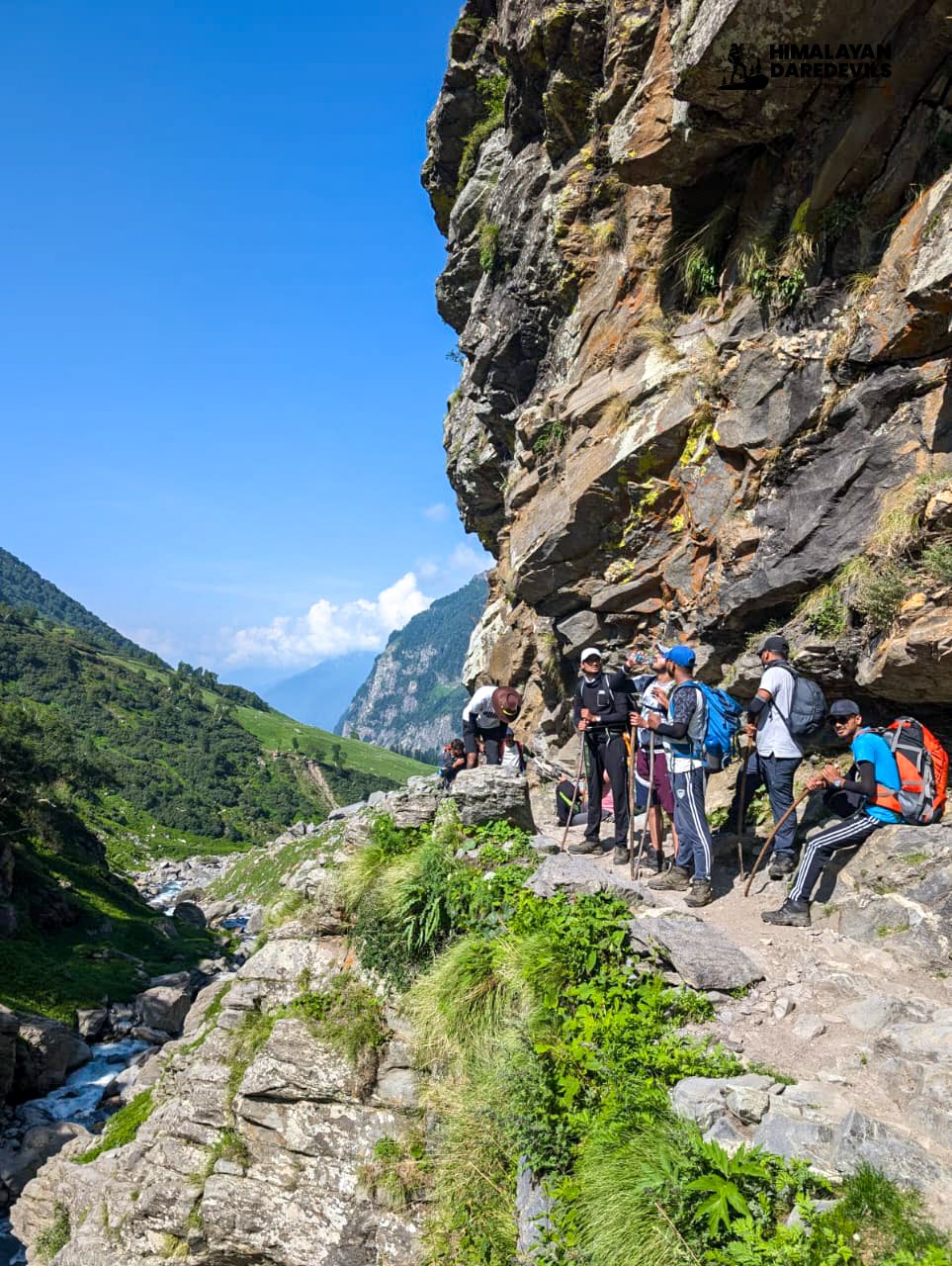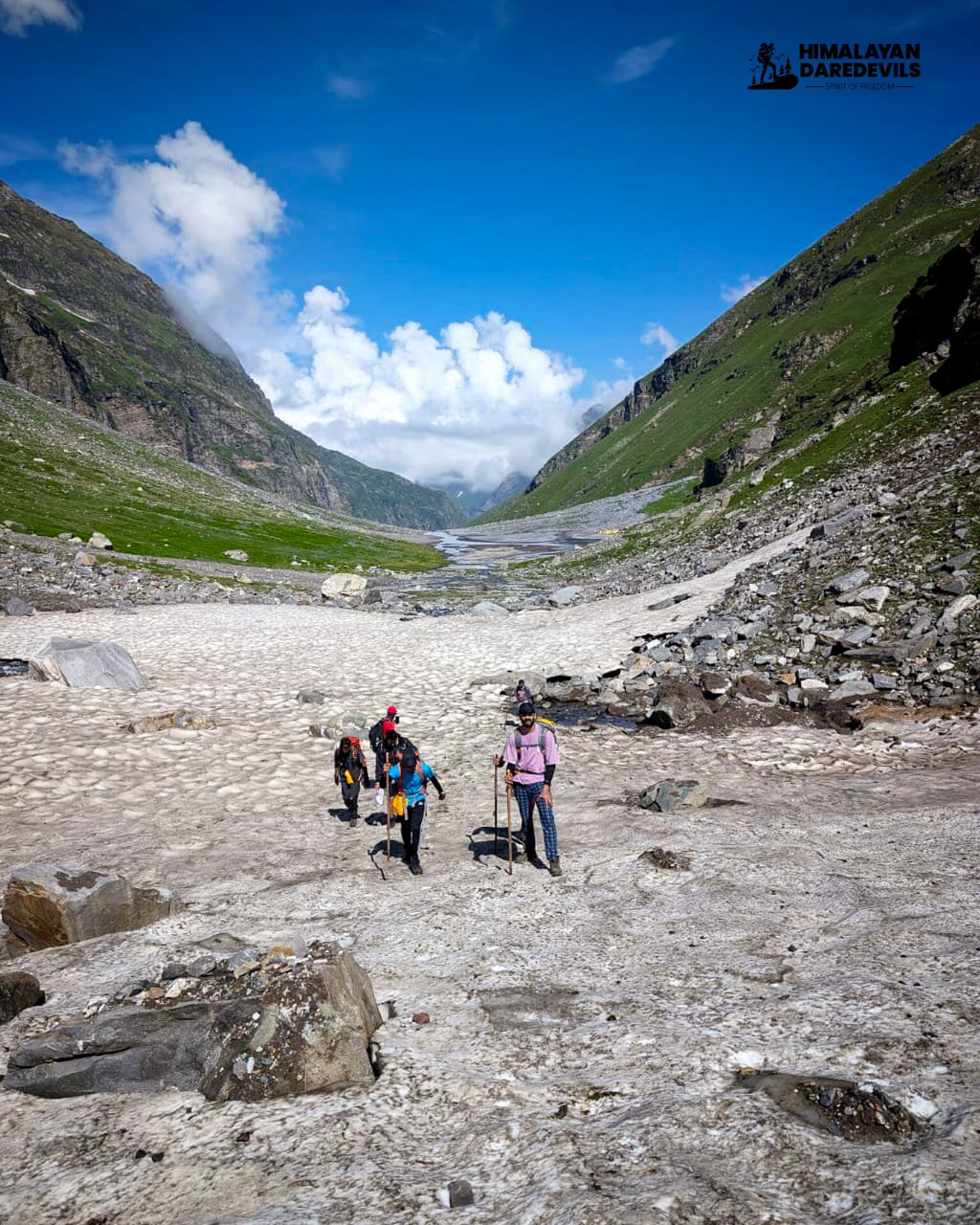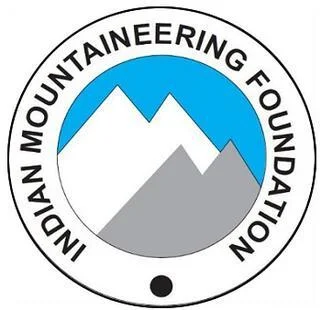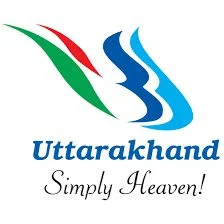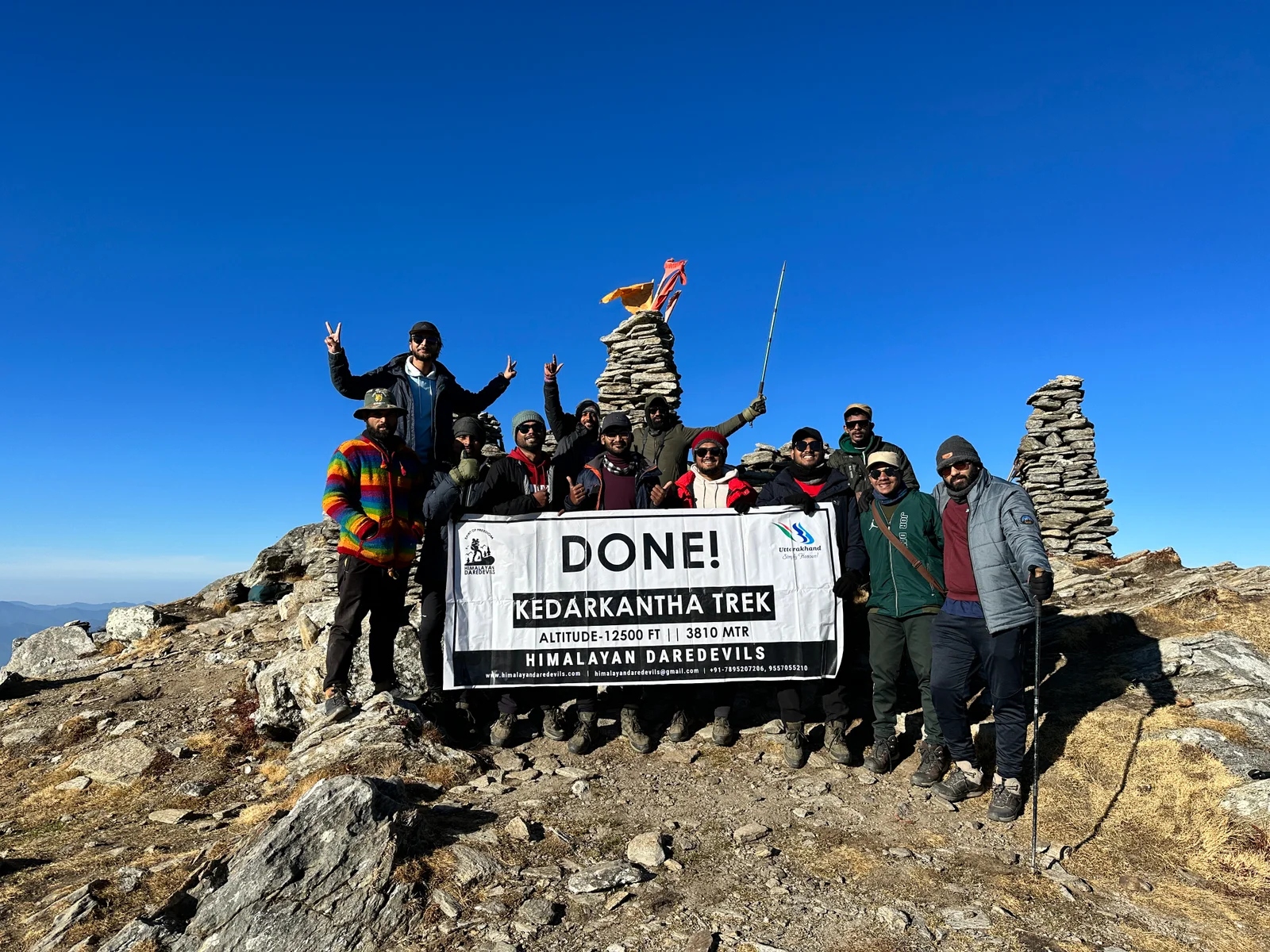Starting From
8,048
6,999.00

Starting From
8,049
6,999.00
Starting From
8,049
6,999.00
Hampta Pass Trek (278+ Reviews)
A cross over trail through passes. The trek starts and ends at Manali
Pathankot is the nearest rail head to the base camp
Bhuntar, which is 52km away from Manali
Manali
July, August and September
Manali to Manali
Meals while on trek( Veg, Egg)
Camping
Himachal Pradesh
5 Days
Moderate
14100 FT
25 Km
Hampta Pass Trek Overview
Hampta pass trek is a mesmerizing crossover trek that helps you in witnessing the beauty of Himachal Pradesh. Hampta pass trek, part of the Pir Panjal range, connects two valleys namely the Kullu Valley and the Spiti Lahaul Valley, making it an interesting trek through two distinct ecosystems. Along the way, you'll also witness the ‘Chandratal’, an emerald shaped lake. The trek's highest point is the Hampta Pass, which is approximately 14,100 feet high and offers striking sights of snow-capped mountains, valleys, and meadows in every direction. The Hampta Pass covers a distance of approximately 26 kms. Due to its easy-to-moderate difficulty level, it appeals to both beginner and experienced trekkers.
The Hampta pass trek is made even more magical by green meadows, narrow rocky paths, glistening streams, thundering waterfalls, and even glaciers. Not to forget the captivating Chandratal lake, that has spiritual significance in the region. Along the route there is also the meeting point of the Hampta Pass, the Rohtang Pass, and Spiti Pass, the views are magical and unbelievable. The experience is indeed surreal. Like many Himalayan villages, it is also home to deeply rooted Buddhist culture. You will also observe the unique way of life at Sethan, a village predominantly occupied by Tibetan and Spitian migrants. When you stand at the Hampta pass that is at an elevation of 14,100 feet, you will witness the two valleys that are opposite of each other. On one hand you will view the lush green valley of Kullu and on the other hand you will witness the Spiti valley that is barren and is referred to as a cold desert.
The Hampta Pass Trek will take your breath away. Every step of this trek will reveal a drastically new horizon. Once at the top, the beautiful and vastly different landscape from the east to west will give you a stunning view. The Hampta Pass Trekking allows you to freely immerse in the vast range of nature that an astounding mountain symphony offers over the course of 5 unforgettable days.
Why is the Hampta Pass Trek a Must-Do?
The Hampta pass trek takes you through a series of glaciers, streams, and beautiful meadows, which is one of the reasons why it is considered to be one spectacular trek. Deo Tibba, Mt. Indrasen, and Hanuman Tibba are some peaks that are visible from the Hampta pass. The Hampta pass trek starts from Jobra which is a beautiful village with rivers, meadows and mountains. You will initially pass through pine, and maple trees from Jobra to Chika, and the meadows. On the way to Balu ka Ghera, you will pass through beautiful rhododendron forests followed by wildflowers steeping to rocky hills and shallow lakes.
Moreover, you will also discover what is the meaning of Balu ka Ghera. On Hampta pass you will meet locals who are warm and welcoming. They will also engage you in stories and tales of the trek and the culture. At Hampta pass you will get a stunning view of the Pir Panjal Range from the gateway of the pass. From this highest point, the region possesses incredible fascinating sights reaching towards the valleys below. These stunning views don’t end here, while descending to Siagoru, which is the most challenging part of the trek. However, the views will surely mesmerize you. It is crossing the Hampta Pass itself which provides both the most challenging as well as most inspiring and satisfying experience.
At an elevation of 14,100 feet, it is physically challenging for the trekkers but at the same time, it is a thrilling experience. The weather can be unpredictable with sudden fluctuations in temperature and occasional snowfall. Upon reaching the pass, the amazing scenery of the Spiti Lahaul Valley and the surrounding mountain ranges offers immense beauty to the trekkers. The entrance to the Lahaul Valley presents an astonishing contrast to the lush greenery of the Kullu Valley, as the landscape gradually becomes barren and rocky.
Hampta Pass Trek and Chandratal Trek Difficulty Level
Moderate Difficulty – This trek is manageable for both beginners and advanced trekkers, but they must be fit because of the steep climbs and descents.
Altitude Challenges – The pass’s highest elevation is 4270 meters which, when not properly acclimatized to, can result in altitude sickness.
Weather Conditions – The waiting period comes with the risk of sudden rain and snow or strong winds, which can make trekking even more difficult.
River Crossings & Rocky Terrain– Trekkers are sometimes required to cross rivers, balance on narrow, slick trails, and move across rocky terrain, which requires stamina.
Best Time to Experience the Magic of Hampta Pass and Chandratal Trek
Hampta pass Trek and Chandratal Lake are wonders that look beautiful in every season but they are most stunning when the weather is right. Here is an analysis of each month so you can get an idea of when to set out on your Hampta pass trek adventure of a lifetime.
June: The Winter Wonderland
Hampta Pass Trek during the month of June is full of mesmerizing snow-covered trails for them to venture on.
The pass remains heavily blanketed with snow accompanied by Kullu Valley which is full of greenery. Then, there are frozen rivers and pathways filled with snow which enable the trek to Lahaul to become all the more amazing.
July: Monsoon On The Horizon & Blooming Meadows
For people who have a liking for trekking, the valley underneath is an abundance of cardiocrinum flowers along with greenery to spring.
Once blooming wildflowers dominate the lower region, the high-altitude trekkers can continue their magical journey without much hassle. Paths filled with snow become easier to manage as the month carries on.
August: The Magic While Raining & Lively Sceneries
Water streams filled with fresh glacial water make rivers worthy during a light drizzle. The beautiful trails capture trekkers' attention with the best views they can enjoy. Though lower areas are prone to light rain, higher camps are unbothered and make life easier for trekkers.
September: The Trekker's Dream
Due to calm and settled weather, September is a popular month for trekkers to leap forward to tackle their dreams. An unobstructed view of the sky and the mountains allow us to see.
Historical Significance of Hampta Pass Trek
1.Old Trade Route– Hampta Pass was historically a major trade route that connected Kullu and Lahaul valleys. Merchants were able to move wool, grains, and spices over the Himalayas through these valleys.
2. Route For Shepherds’ Migration – For centuries, Gaddi shepherds have used this route for seasonal migration, moving animals to higher pasture land in Lahaul during the summer and returning to Kullu during winter.
3. Hampta Pass Integrating Himalayan Regions– For different regions of the Himalayas, the pass was the link that allowed movement of travelers and goods through the rough mountainous region.
4. Folklore and Mythology Importance– The region is full of local stories and myths that associate the Himalayas with deities making the trek culturally important for some people.
Key Highlights of Hampta Pass Trek
Glaciers: The Hampta Pass trek is a breathtaking journey that showcases the pristine white glaciers while connecting the untouched Spiti region with Kullu Valley. The Hampta Pass turns out to be an amazing trekking exhibit as the Pass itself is surrounded by glaciers making ice magic the most beautiful geology skill. Climbing toward the pass, you walk across glacial areas, flanked by ice walls and snowfields. Glaciers are a great addition to the trek as they enable you to experience what it feels like to walk on ice.
Diverse Landscape: From Jhobra, a small village, people can witness a lot of diversity in the topography from lush green jungles to alpine pastures to rugged moraines and high arid lands. Hampta pass is a crossover trek where the diverse Landscape of Spiti and Kullu valley will leave you in shock. On one side you will view the lush green valley of Kullu and on the other side Spiti’s barren land.
Chandra Taal Lake: Another memorable part of the journey is where you will set a base near some of these lakes and valleys such as Chandratal Lake. Located in Himachal Pradesh Spiti Valley, Chadra Taal Lake is famed for its turquoise waters with immense clearness. The lake is surrounded by snow capped mountains and normally tends to be a preferred destination for adventure seekers as well as trekkers. It offers a serene, stunning and celestial experience while you’re under a clear and starry night sky.
Thrilling views: The most exciting part of the trek is moving through Hampta Pass which stands 14,100 feet above sea level and grants you the view of revolving snow-capped mountains. The mountain views of Dhauladhar range and Pir Panjal range will be worth it. Not only the mountain views, the campsites at Balu ka Gera will leave you mesmerized.
This trek is ideal for all those who want a moderate challenge while experiencing the sheer magnificence of nature.
Why is the Hampta Pass Trek an Incredible Crossover Trek?
Hampta pass trek starts from the green valleys of Kullu and takes you across peaceful forests, meadows, and wildflowers. The scenic route is complemented by wooden bridges, waterfalls, and streams. With each step, the scenery changes leading up to the breathtaking Hampta Pass of 4270 meters which is surrounded by the dry and barren mountains of Lahaul and Spiti.
This swift transformation from a green wonderland into a cold desert is what makes the Hampta Pass Trek unique. It's one of the few treks in India where you get to witness two extremes of nature in a matter of just a few days.
Perhaps the most exciting part of the Hampta Pass Trek is the impressive water crossings. Throughout the trek, trekkers can find countless small waterfalls, glacial streams, and sparkling rivers.
Hampta Pass enhances its majesty with the not-so-faraway Chandratal Lake which is a high-altitude lake located in the heart of the Spiti Valley.
Chandratal derives its name from the crescent shape it takes, meaning “Moon Lake.” It is known not only for its crescent shape but also for its stunning mountain reflection alongside the clear blue sky. It is surrounded by rough mountains that provide the most photogenic contrasts. The clear turquoise water is blue at times and green at others, making this stunning lake even more marvelous.
The lovely experience of witnessing the dazzling stars is only enhanced by spending the night by the Chandratal Lake whose peaceful ambiance magnifies the beauty of this trek.
Although the Hampta Pass Trek has an altitude of 4270 meters, its difficulty is rated as moderate owing to the altitude not being the highest in the Himalayas. Due to this, it is regarded as one of the best Himalayan treks for beginners to sharpen their skills.
From every telegraphic pole to every inch of the trek is dotted with beautiful and breathtaking views of the entire Pir Panjal and Dhauladhar mountain ranges. The Hampta Pass summit has to be one of the most breathtaking sights where trekkers can witness:
The Kullu valley on one end
The arid Lahaul-Spiti barren land on the other end
Indrasan and Deo Tibba snow-capped mountains in the distance.
The Hampta Pass region is widely known for its mesmerizing sunrise and sunset views where the snow capped peaks transform into varying shades of pink, orange and gold. The ever-changing skies make the experience more memorable.
6 Key Things to Remember While Trekking Hampta Pass
1. Prepare Yourself for the Climb – Regular cardio, strength training, and stamina-building exercises are key to successfully getting through the steep climbs and hours-long treks.
2. Get Used to the Environment – To Manali's 2050m altitude and hampered weather, Manali needs a day to stretch and to avoid getting used to the altitude before the trekking.
3. Think Ahead and Prepare Consciously – Outdoor essentials such as waterproof gear, sunglasses, energy snacks, and headlamps combine well with the basic warm clothing and trekking shoes.
4. Drink Water Frequently – For hydration and better dealing with high altitudes, drinking plenty of water guarantees better durability during treks.
5. “Brace for the Worst” Expression is a Thing for a Reason – Always expect the worst, and having gear to combat the rain alongside gloves and other warm clothing is ideal as the weather shifts rapidly.
6. Think Green – The beauty of the trek can be preserved best by following eco-friendly practices and sticking to designated paths.
Tips for a safe Hampta Pass and Chandratal Trek
1. Take Time to Acclimatize – To offset the risk of AMS (Acute Mountain Sickness), spend a day in Manali before commencing your walk.
2. Pack Knowledgeably – Bring extra layers of clothing, a waterproof jacket, trek shoes, and also remember to bring essential items like sunglasses, sunscreen, and a headlamp.
3. Lower Temperatures, Second Thoughts – Avoid dehydrating beverages like alcohol or caffeine. To change altitude more rapidly, drink a lot of water.
4. Assist With Blocked Path, Overhead Gaiters– Walk in silence. Please encourage your guide to progress through the expected route if you do not wish to deal with hostile ground conditions or get lost in the beautiful terrains.
5. High And Low, Swift Changes Are Known – Be prepared to adjust swiftly to the rapid weather changes. Remember, warm days and ice cold nights can happen especially higher up.
6. Pack Lightweight Supplements– Do pack chocolate bars alongside dry fruits and protein bars. These serve as great energy sources while trekking.
7. Leave Areas clean – Please obey the principles of eco friendly trekking, and maintain clean surroundings.
Why choose Himalayan Daredevils for Hampta Pass Trek?
Himalayan Daredevils is famous for its hassle free treks and an amazing experience we provide. Our guides are well trained and full of knowledge. They will help you during the trek, even the stories they will share with you will be fascinating.
1. Certified Trek Guides – First-aid and navigation support is easily accessible because our professional guides are always on standby.
2. Comprehensive and Simple Comforts – There is no need to worry about trekking restrictions, camp sites, or transport because everything is catered for.
3. Safety Above All – Receiving oxygen, first-aid, or even an evacuation is no issue at all because your safety comes first.
4. Excellent Tents and Sleeping Bags – Staying in high quality tents and sleeping bags and receiving well balanced meals helps sustain energy for vigorous activities.
5. Sustainable Practices – During the treks, infrastructure, emissions, and waste generation is finely controlled so that the Himalayas can be preserved.
The Most Important Aspects of Safety for the Hampta Pass Trek
Here at Himalayan Daredevils, ensuring the safety of our trekkers is paramount. Certainly, the Hampta Pass Trek is epic in its undertaking but a few factors like the altitude transitions, the terrain’s roughness, and bad weather can all play a part in making it difficult. It is our focus to make sure that every precaution is taken so that your trekking experience is as safe, thrilling, and memorable as possible. Here are some important aspects:
1. Physical Fitness is Essential: Prior to starting the Hampta Pass Trek, it is vital to prepare yourself physically and psychologically. Your legs as well as your general stamina and endurance can get you through this moderate trek. Higher altitude acclimatization is essential for a smooth transition.
2. Best If You Follow Your Guide: With our competent trek leaders and guides, you do not need to worry about overexposing yourself to dangerous areas. They are very helpful in making sure you are on the correct track. Not following a guide or straying too far from the trail can and will make you get into trouble. Always remain with the group.
3. The View is Great, But Watch Your Step: The disruptive and stunning views are often the reason many trekkers get off track and forget to watch their step. Try to center your attention on where you step, and if you need help, don't hesitate to use your trekking poles.
4. Advanced Medical Aid and First Responder Assistance: Consult your physician prior to commencing the trek, particularly if you have any underlying health concerns. We carry an oxygen kit, first aid kit, and medical emergency kit, among other items in our medical kit. In the event of any trekker suffering from altitude sickness and other serious health challenges, our staff mobilizes instantly. As with any other altitude trekking, there is some emergency evacuation plan on standby.
5. Emergency: In the occurrence of critical emergencies, the closest hospital to the trek location is in Manali, which is about 32 km away. Manali is the nearest hospital and is approximately 32 km away from the trek path. If the situation requires, Himalayan Daredevils is sure to provide a rapid response with evacuation.
6. Nutrition and hydration: Achieving proper hydration is fundamental to countering altitude sickness. Balanced meals rich in nutrients are served to ensure enough energy is available for extensive trekking periods. Smoking and drinking alcohol should be prohibited when trekking as they can intensify altitude sickness.
7. Field Communication and other assistance: Ensuring each trekker is safe is our utmost priority hence we stand by as constant communication is made by our team. Should you find yourself feeling sick or uncomfortable at any point, make sure to notify your trek leader or guide without delay.
At Himalayan Daredevils, we have one goal in mind, making your Hampta Pass Trek both safe and memorable. With the right preparations, guidance, and precautionary measures put in place, you will be able to relish the awe-inspiring beauty of the Himalayas without any worries.
Weather In Hampta Pass Trek
Hampta Pass Weather is subject to months and altitude, the Hampta Pass trek is open to trekkers from the month of June to September after which the temperature dips reaching below the freezing point.Summers (June to Early July):
Daytime Temperature : 13°C - 18°C Night Time Temperature : 0°C - 7°CMonsoon (Mid July - August ):
Daytime Temperature : 14°C - 25°C Night Time Temperature : 8°C - 13°CAutumn (September - October)
Daytime Temperature : 12°C – 18°C Night time Temperature : 2°C – 8°CWinter (November - April)
Daytime Temperature : -5°C - 5°C Night Time Temperature : -10°C and below It is because of the altitude that in Hampta Pass Temperature remains below 10°C in the daytime and can also reach below freezing point. It is important that you bring plenty of good insulated clothes to keep you warm in the rough himalayan weather.Places You Will Visit While On the Hampta Pass Trek
The trail to reach the Hampta Pass is dotted with beautiful villages and emerald green meadows, you will see awesome vistas at every bend and at every milestone. Jhobra - The trek to Hampta Pass begins from the quaint himalayan village named Jhobra. Sitting at an altitude of 2,700 m the village is situated next to the Rani Nallah river. The slope roofed himalayan house and the river flowing between them Chika - The next milestone after the Jhobra village is Chika where open valleys with wildflowers and waterfalls wait for you. The night halt at the village also gives you an opportunity to star gaze and see the milky way Balu Ka Ghera - Balu ka Ghera means ‘heap of sand’, the place where shepherds coming down from the green himalayan meadows come to rest for a while. The place is surrounded by boulders and snowy peaks, a perfect place to take out your cameras and capture the Himalayan Glory. Hampta Pass - The Highlight of the trek and the place after which the trek takes its name is the Hampta Pass. At a height of 4,270 m the Hampta Pass is the highest part of the trek. Climbing up the pass gives you stunning views of the Lahaul Valley, glaciers and the distant peaks. Chandratal Lake - After ending your trek at Chhatru you have the opportunity to see the crystal clear waters of the crescent shaped lake in Spiti. The trip will add one day to your adventure and would give you memories never to be forgotten.Hampta Pass Trek Itinerary
Start the trek from Manali and reach Jhobra. On the drive you will see the lush green valleys and snow capped mountains.
Get some rest and lunch at Jhobra Camp, get ready to trek to Chika.
Begin the trek to Chika, walk through the dense oak,pine and birch forest.
Reach the Chika campsite and enjoy the scenery of the surrounding hills and the Beas river following next to the camp.
SHORT ITINERARY:
Distance: 3 KM trek / Time: 2 to 3 Hours / Altitude: 3,100 meters
DETAILED ITINERARY:
The Hampta pass trek starts in Manali, at the place which is the starting point of the trek. After a short introduction and checking the bags the trip to Jhobra starts here. Manali to Jhobra covers a distance of roughly 35-40 km and takes around 2-3 hours depending on the roads. While on your trip, you will see beautiful sceneries of lush valleys, rivers, and even snow-capped mountain peaks which provide a great impression before the start of the trek.
When you reach Jhobra, you will freshen up, take some rest, and have lunch before starting for the Chika campsite. The distance of the Chika camp from Jhobra is around 3-4 kilometers which can be completed typically in 2-3 hours. The earlier portion of the trail normally begins with a steady climb through dense oak, pine, and birch forests. While walking, the melodious sound of nature surrounds you making your trek a delightful and lovely walk.
Upon reaching the first campsite, Chika, you will be able to enjoy the impressive scenery of the surrounding hills and Beas River. The beauty of the Chika campsite is that it also overlooks a meadow which is ideal for setting up camp. After having a nice warm dinner, you will sleep in the tents and prepare for the next day’s activities in your dreams for the time being.
After having breakfast at Chika campsite, begin the trek to Balu ka Gera.
The trek is easy at the beginning, filled with beautiful scenery of mountain streams and meadows.
Certain areas are challenging as there are river beds and rocky terrain.
Reach Balu Ka Gera and witness the highland pasture with high mountains in the background. Camp here for the night.
SHORT ITINERARY:
Distance: 5 KM / Time: 4 to 5 Hours / Altitude: 3,600 meters
DETAILED ITINERARY:
One can start the trek to Balu ka Gera after having a delicious breakfast at Chika. The distance between Chika and Balu ka Gera is close to 5-6 kilometers and it takes 4-5 hours on foot. The trek begins with an easy footpath that leads to beautiful alpine meadows. The further you climb, aside from the increasing effort, you will be rewarded with beautiful vistas and striking views of the Balu ka Gera region nestled in the valley.
The slopes set the perfect terrain for various streams along the trek, providing a soothing enhancement to the entire experience. The paths can be rather challenging in certain areas as there are other river beds and rocky bodies, however, the surrounding view is worth the pain. Sights of the Hampta Valley and the mighty Himalayan Range will take your focus while heading towards Balu ka Gera.
When you reach Balu ka Gera, you will see a beautiful highland pasture with high mountains in the background. It's a calm place for sightseeing and relaxing. There is also a camp which will be used for the night and after a hearty meal, you will spend the night in tents in the lap of nature before you start on the following day's trek.
The steep ascent makes the third day the toughest day of the trek.
Reach the highest point of the trek, Hampta Pass (4,270 m). The summit point offers you the best view of the glorious snow capped mountains.
Enjoy the view and then walk down to Siagoru. It is a 2 to 3 hour journey through alpine meadows and challenging rocky terrain
Reach Siagoru, relax and camp here for the night.
SHORT ITINERARY:
Distance: 7 KM / Time: 7 to 8 Hours / Altitude: 4,270 meters (Hampta Pass)
DETAILED ITINERARY:
The third day of this trek is arguably the best and toughest because you will need to cross the Hampta Pass. After enjoying a hearty breakfast at Balu ka Gera, you will begin for ascent. The opening phase of this climb involves a steep ascent that lasts around 4-5 hours. As one of the highest points on the trek, reaching an elevation of 4,270 meters, Hampta Pass offers stunning views of the snow-capped peaks. Be sure to take a moment to appreciate the scenery and capture it for your memories.
After enjoying the views, you will start walking down towards Siagoru. This descent lasts around 2-3 hours. The scenery becomes more beautiful and enjoyable. This will all change as the trek will once again guide you through alpine meadows and rocky terrain.
At long last, your journey will bring you to the Siagoru campsite where you'll pitch your tents for the night. This beautiful site nestled in lush greenery is perfect for a souvenir while enjoying a wholesome meal. After a long and fulfilling day, you will spend the night in sleeping bags as you prepare for the upcoming future activities.
On day four The trail moves through a rugged terrain that is attractive and unique
Reach Chatru and see the beautiful mountains and river flowing between them
Rest for a while at Chatru and the make a short trip to Chandratal Lake
Enjoy the beauty of the Chandratal lake and then return to Chatru to camp for the night.
SHORT ITINERARY:
Distance: 7 KM / Time: 4 to 5 Hours / Altitude: 3,300 meters
DETAILED ITINERARY:
The first base for today’s trek is Siagoru, which is approximately 6-7 km of distance from Chatru. The trek is between four and five hours long and features rocky areas which makes the hike an astonishing experience. As you keep moving forward the stony mountains and curved trails will take you to amazing landscapes. The region’s rugged features will surely attract you as you move towards Chatru which is known for its captivating views.
Once you arrive at Chatru, what will welcome you will be the stunning sights of rivers and mountains. This is also the area where the day’s trek comes to an end, and it is safe to say that it has a peaceful environment. The camp will be pitched here, and you can take some time off and rest in your tents for a while.
The journey is not concluded yet even after you have spent sufficient time in Chatru. From Chatru, you will make a short trip of two to three hours to Chandratal Lake. Chandratal Lake has no parallels due to its tranquility and scenic value. When you reach Chandratal, you can take some time to take a walk, however the lookout is worth it. Finally, after spotting the tar, return to Chatru and spend a night in your tents.
Have breakfast at Chatru and then start your journey back to Manali
Enjoy the breathtaking view of the himalayas while on the drive
Reach Manali by evening.
SHORT ITINERARY:
Distance: 85 KM drive / Time: 5 to 6 Hours / Altitude: 2,050 meters
DETAILED ITINERARY:
Your Hampta Pass trek winds up on the last day starting with an early breakfast at Chatru. After the camps are packed and you have enjoyed a stunning and tranquil camp, an 8-9 hour drive commences from Chatru back to Manali. The drive is filled with breathtaking views, as it takes you through rugged mountains, winding roads, and picturesque villages scattered along the way.
You’ll also witness the valleys and the snow peaks that are in the surroundings, while you drive along the Beas River cutting across the green cover of Himachal. The drive also provides a moment to think back on the journey you have just completed as you are gradually making your way from the foothills to the bustling city of Manali.
By evening you will reach Manali and it is at this point where your trek officially finishes with Himalayan Daredevils. After a long traveling day, you will be able to take some time for yourself in the hotel or accommodation enjoying the pleasures while you reside therein. This marks the end of Hampta Pass, and you’re left with remarkable experiences and emotions regarding the beauty of nature in the Himalayan region.
Hampta Pass Trek Map

Trek Review Videos
Inclusions
Exclusions
1. Meals while on trek (Veg).
2. All necessary entry fees and permits.
3. Accommodation: - Guest house, Home stay, camping during Trek.
4. Transport-From Manali to Jobra and Chatru to Manali
4. Mountaineering qualified & professional trek Leader, guide, cook and Support staff.
5. First aid medical kits, stretcher and oxygen cylinder.
6. Trek equipment: Sleeping bag, mattress, tent, kitchen & dining tent, toilet tent, utensils and crampon (if required)
7. Staff Insurance.
8. Porters/mules to carry central equipment.
1. Any kind of personal expenses.
2. Food during the transit.
3. Transport (Non Ac)
4. Mules or porters to carry personal luggage.
5.Insurance.
6. Optional: Visit Chandratal and then return to Manali. 9-10 hour drive. If you choose to visit Chandratal Lake, the transport cost would be Rs 9,000 per vehicle.
7. Any kind of emergency evacuation charges
8. 5% GST
9. Any expense incurred or loss cost by reasons beyond our control such as bad weather, natural calamities (landslides, floods), flight delays/rescheduling/ cancelations, any accidents/medical evacuations, riots/strikes/war/pandemics etc.
10. Anything not specifically mentioned under the head.
1. Meals while on trek (Veg).
2. All necessary entry fees and permits.
3. Accommodation: - Guest house, Home stay, camping during Trek.
4. Transport-From Manali to Jobra and Chatru to Manali
4. Mountaineering qualified & professional trek Leader, guide, cook and Support staff.
5. First aid medical kits, stretcher and oxygen cylinder.
6. Trek equipment: Sleeping bag, mattress, tent, kitchen & dining tent, toilet tent, utensils and crampon (if required)
7. Staff Insurance.
8. Porters/mules to carry central equipment.
1. Any kind of personal expenses.
2. Food during the transit.
3. Transport (Non Ac)
4. Mules or porters to carry personal luggage.
5.Insurance.
6. Optional: Visit Chandratal and then return to Manali. 9-10 hour drive. If you choose to visit Chandratal Lake, the transport cost would be Rs 9,000 per vehicle.
7. Any kind of emergency evacuation charges
8. 5% GST
9. Any expense incurred or loss cost by reasons beyond our control such as bad weather, natural calamities (landslides, floods), flight delays/rescheduling/ cancelations, any accidents/medical evacuations, riots/strikes/war/pandemics etc.
10. Anything not specifically mentioned under the head.
What should you carry for the Hampta Pass Trek
- Trekking shoes: A good pair of trekking shoes is essential for a comfortable and safe trek. Look for shoes that are sturdy, provide good ankle support, and have a good grip on different types of terrain.
- Backpack with rain cover (50-60 ltr): A backpack is necessary to carry all your gear. Make sure it's the right size for your trek, and comes with a rain cover to keep your belongings dry in case of rain.
- Thermals (upper and lower): Thermals are lightweight and comfortable base layers that help regulate your body temperature in cold weather. Bring both upper and lower thermals to keep warm.
- 3 T-shirts (advisable quick dry): Choose quick-drying T-shirts made from breathable and moisture-wicking materials. This will help keep you cool and dry during your trek.
- 2 trek pants: Choose lightweight and comfortable trek pants that are easy to move in and can dry quickly if wet.
- Jacket (-10 degree): A warm jacket is essential for cold weather. Choose a jacket that is waterproof and windproof, and provides good insulation.
- Fleece or hood (2): Fleece jackets or hoodies are great mid-layer options to keep warm. Bring at least two, as they can also be used as an extra layer at night.
- Sunglasses (UV protected): Protect your eyes from the sun's harmful UV rays with sunglasses that are designed for outdoor activities.
- Sun cap: A sun cap or hat with a brim will protect your face and neck from the sun.
- Hand gloves: Bring a pair of lightweight gloves to keep your hands warm and protected from wind and sunburn.
- Woollen cap: A woollen cap will keep your head and ears warm at night or in cold weather.
- Socks (3 pairs min): Bring at least three pairs of good quality socks that are moisture-wicking and provide good cushioning and support for your feet.
- Headlamp: A headlamp will come in handy if you're hiking in low-light conditions or need to find your way in the dark.
- Trekking pole (if needed): Trekking poles can help reduce strain on your legs and provide additional support on steep terrain.
- Rain cover\poncho: A rain cover or poncho will keep you and your gear dry during unexpected rain showers.
- Day pack (if you plan to offload your bag): If you plan to offload your backpack during the trek, bring a smaller day pack to carry essentials like water, snacks, and a first aid kit.
- A toiletry kit: Bring a small kit with personal hygiene items, such as a toothbrush and toothpaste, wet wipes, hand sanitizer, and toilet paper.
- Lunchbox, cup, spoon: If you plan to bring your own food, bring a lunchbox, cup, and spoon to carry and eat your meals.
- 2 one-litter bottles: Staying hydrated is crucial, so bring at least two one-liter bottles to carry water.
- 2-3 plastic covers to keep your wet or used clothes: Plastic bags are useful for keeping wet or dirty clothes separate from the rest of your belongings. They can also be used to pack out any trash or waste you generate during the trek.
How to Reach Hampta Pass Trek
The nearest airport is Kullu-Manali Airport (Bhuntar), located 50 km from Manali. Regular flights connect major cities like Delhi and Chandigarh to Bhuntar. From there, taxis or buses can be taken to Manali.
Manali is well-connected by road, and you can drive from Delhi (approx. 550 km) via NH 44 and NH 3, which takes around 12-14 hours. Several buses also operate from cities like Delhi, Chandigarh, and Dharamshala to Manali.
The nearest railway station is in Joginder Nagar, about 160 km from Manali. You can take a train to Joginder Nagar and then hire a taxi or take a bus to Manali. After booking your Hampta pass trek package with Himalayan Daredevils you will be informed regarding the pickup from Manali. Don't forget to choose the option of pickup from Manali while booking the Hampta pass trekking package, if you need transportation to Jhobra.
Fitness and preparation guide for Hampta Pass Trek
Trekking to Hampta pass demands a combination of cardiovascular endurance, strength, and flexibility. Here's a comprehensive fitness preparation guide to help you get trek-ready:
1. Cardiovascular Endurance
For easy to moderate treks like valley of flowers, cardiovascular endurance is essential. Aim to run 4.5 kilometers in under 40 minutes consistently before your trek. Start by jogging at least 5 days a week. If you're new to running, begin with 2 km and gradually increase the distance over 2-3 weeks.
By consistently building up your stamina, you'll ensure that you can handle the long, uphill walks.
How to prepare:
Start running 2-3 km daily
Gradually increase to 4.5-5 km in 6-8 weeks
Focus on completing 4.5 km in less than 40 minutes by the end of your training
2. Lower Body Strength
Strong legs are crucial for trekking as they power you through steep ascents and provide stability on downhill paths. Incorporate exercises that target your quadriceps, hamstrings, glutes, and calves.
Key Exercises:
Squats: Build strength for ascending terrain by targeting your quads, hamstrings, and glutes.
Lunges: Improve stability, flexibility, and control while trekking on uneven terrain.
Training Tips:
Perform 3 sets of 12-15 squats and lunges 3-4 times a week
Gradually increase the number of repetitions as your strength improves.
3. Core Strength
A strong core helps maintain stability and balance on uneven, rocky trails. Engaging your core during trekking will also reduce fatigue and protect your back from strain
Core Exercises:
Planks: Strengthen your abdominals, obliques, and lower back, crucial for maintaining posture
Russian Twists: Enhance your rotational stability, preventing injuries during twists and turns.
Training Tips:
Start with holding planks for 30 seconds, gradually increasing to 1-2 minutes
Perform 3 sets of Russian twists with 20 repetitions per side.
4. Upper Body Strength
Trekking often requires carrying a heavy backpack, so building upper body strength is vital. Exercises targeting your shoulders, chest, and back will improve your ability to carry the load comfortably and maintain posture throughout the trek.
Key Exercises:
Push-ups: Strengthen your chest, shoulders, and triceps for carrying your backpack
Pull-ups/Bodyweight Rows: Strengthen your back muscles to improve posture and prevent fatigue.
Training Tips:
Do 3 sets of 10-15 push-ups and 3 sets of 5-10 pull-ups or bodyweight rows at least 3 times a week.
5. Full Body/Cardio Workouts
Incorporating full-body exercises like burpees and mountain climbers boosts your cardiovascular endurance and strengthens both upper and lower body muscles.
Key Exercises:
Burpees: Boosts cardiovascular endurance and overall strength
Mountain Climbers: A dynamic movement that strengthens your core, chest, shoulders, and legs.
Training Tips:
Perform 3 sets of 10-12 burpees and 3 sets of 20 mountain climbers (10 per leg) to build stamina.
FAQs of Hampta Pass Trek
No, the Hampta pass trek is not difficult. The Hampta trek is a himalayan trek of moderate difficulty and is fit for beginners provided they are physically fit and ready. The trek is 27 kms long and it takes around 5 days to complete it. One has to tackle a variety of terrain to reach Hampta Pass, which can be a bit challenging if one doesn’t possess basic fitness.
It takes 5 Days to complete the Hampta Pass trek which stretches for 27 kms in distance. The trekkers climb through a variety of terrain to reach the Hampta Pass situated at a height of 14,107 ft before finally descending down.
It takes 5 days to complete the 27 kms long Hampta Pass. The himalayan trek begins from Manali and takes you on a five day journey to witness himalayan meadows, alpine lakes, wildflowers and snow capped peaks.
14,100 ft is the highest point of the Hampta Pass trek and one reaches this altitude on Day 3 of the trek. The trek to Hampta Pass starts from Manali which is at a height of 6,400 ft, from here one slowly climbs up to reach the highest point of the trek.
June to October is the best time to visit the Hampta Pass trek. The temperature between these months stays at a comfortable 12 degrees to 20 degrees celsius. You may find some snow during the early months, this adds to the charm of the trek.
Hampta Pass Trek is famous because it offers the otherworldly vistas of the high himalayan wilderness without being too extreme. The trek and its enthralling sceneries can easily be enjoyed by a beginner with Basic level of fitness.
The Hampta Pass bridges the lush green valley of kullu to the unique and exquisite Spiti valley. The visual treat and the ease of excess makes this trek famous among lovers of adventure.
Yes, Hampta Pass trek is a safe trek for anyone who is in good physical shape. With proper preparation and a good trekking company the Hampta Pass trek becomes one of the safest treks there is.
No, prior trekking experience is not needed to venture on the Hampta Pass trek. Although the trek does become a lot easier for someone with experience in trekking, the Hampta Trek is a beginner friendly trek.
Hampta Pass trek is a moderately difficult trek and so it does require a certain level of fitness to complete it. In your 5 days of trekking to the Hampta Pass you will walk at least 5 to 9 KM daily and that too in high altitude himalayan terrain. Your level of physical fitness is directly proportional to the
4 to 5 KM Jogging in under 35 minutes
Squats and Lunges (3 sets of 20)
Planks (5 minutes)
Crunches (3 sets of 10)
Trekking to the Hampta Pass with the Himalayan Daredevils would cost you 6,999.
There are no roads that go directly to the Hampta Pass. You will have to drive for 15 kms from Manali to reach Jobra from where the 25 kms trek to Hampta Pass begins.
Mobile connectivity after Jobra is spotty and unreliable and there is no electricity on trek i.e from Jobra to Chhatru. It is recommended that you carry a powerbank to charge your image capturing devices and tell your loved ones that they won't be able to reach you on mobile for a few days.
The temperature during the Hampta Pass trek varies a lot depending on the elevation and the month of the visit. During the trekking season from the Mid-June to Late September the temperature reaches in the daytime from 15°C in Manali to 5°C in the Hampta Pass. It is recommended that you carry good insulated warm clothes fit for the alpine weather.
| Location | Altitude | Daytime | Nighttime |
| Manali | 6,725 ft | 15° to 25° C | 5°C to 10°C |
| Jobra to Balu ka Ghera | 8,860 ft - 11,800 ft | 10°C to 15°C | 0°C to 5°C |
| Hampta Pass | 14,010 ft | 5°C to 10°C | -5°C to -2°C |
| Shea Goru to Chhatru | 12,470 ft - 10,500 ft | 8°C to 15°C | -2°C to 5°C |
3 permits are required for the Hampta pass trek which are namely :
Forest department permit
Inner line Permit for Lahaul Valley
Rohtang Pass Permit
Trekking agencies handle the permit process on behalf of the trekkers
Yes, Chandratal is included in the Hampta Pass Trek. After 4 days of trekking from Jobra to Chatru, you will reach the motorway from where the Chandratal lake is 2 to 3 hours away.
Cancellation policy
Life is unpredictable and we understand sometimes you have to cancel or change your trip dates and it is our endeavour to make it as easy possible for you. However, please understand we plan everything including guide fees, permits, accommodation and ration in advance. Therefore any cancellation means inconvenience and certain losses to the people involved in various stages of programme. Keeping that in mind, our cancellation charges are as below-
Cancellation prior to 30 days from start of the event: Get monetary refund with 15% of cancellation charges on trek fee.
Cancellation between 30 days and 15 days to the start of event: 50% on trek fee is non refundable and the remaining 50 % will be given as cash voucher which is valid for 1 year.
Cancellation less than 15 days to the start of event: No refund.
Please note cancellation will be only accepted by email.
Booking amount is non refundable
Note: The Himalayan Daredevils reserves the right to cancel a programme before departure in the event of logistical problems arriving due to natural calamities, strikes, wars on any other circumstances that makes the event inadvisable. In this case, 50% on trek fee is non refundable and the remaining 50 % will be given as cash voucher which is valid for 1 year.
Itinerary changes & trip delays:
We plan itineraries based on the information at the time of planning and in rare circumstances, there are subject to change. In the event that the itinerary is changes or delayed due to unforeseen circumstances such as bad weather conditions, transportation delays, government intervention, landslides etc. We will always aim to give you the best experience possible. However The Himalayan Daredevils are not be held responsible for the cost of delay or changes.
Why Choose Us
Our Best Performance
50,000+
Trekkers
PAN India Treks
250+
Treks
Professional
and Experienced Staff
Best
Grade Equipment
Well Organised
Trek Itineraries
Related Blogs
Read and get more about our treks
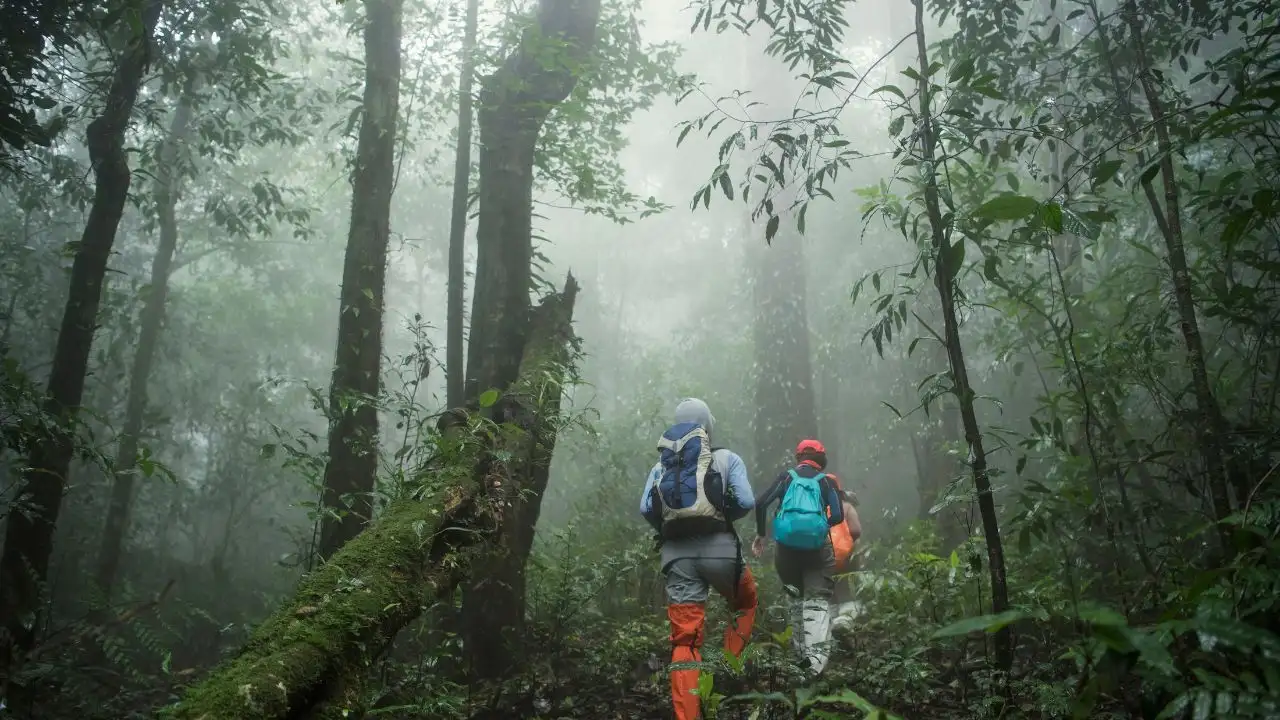
Hampta Pass vs Pin Bhaba Pass: Which Trek to Choose?

Top 5 Himalayan Monsoon Trek in India
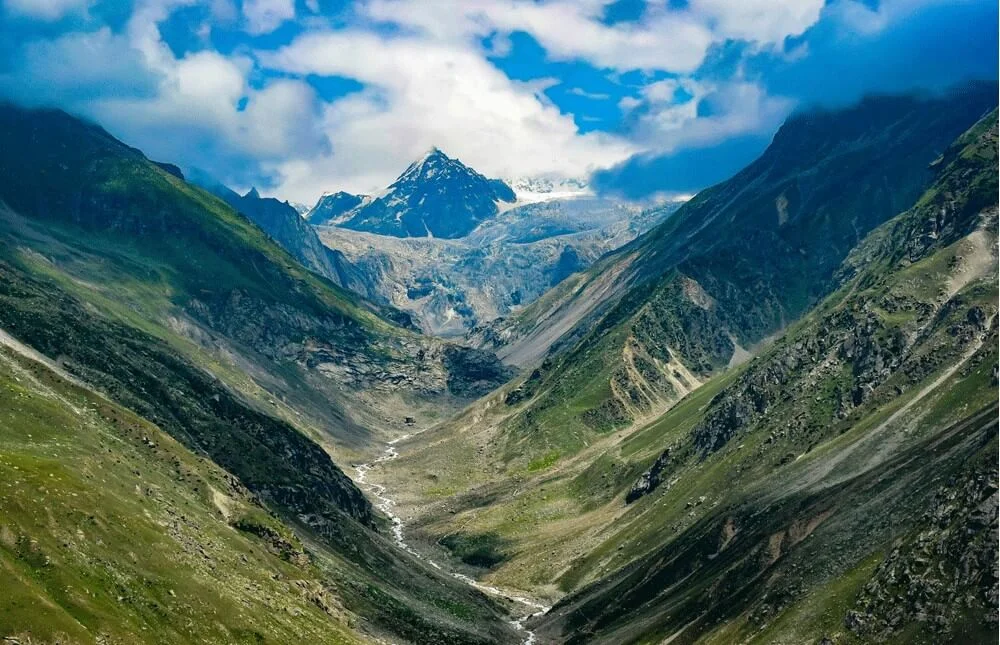
Best Treks in Himachal Pradesh - Himalayan Daredevils
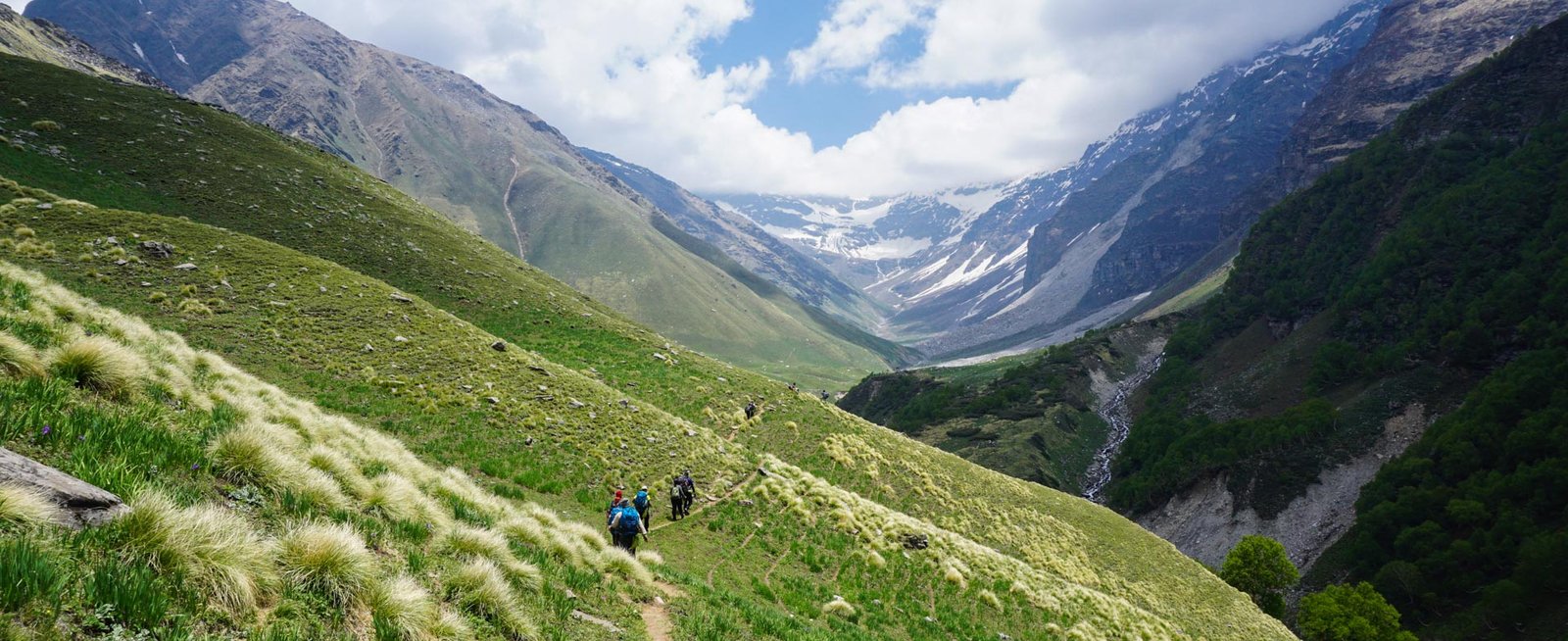
Difficulties of Buran Ghati Trek | Himalayan Daredevils
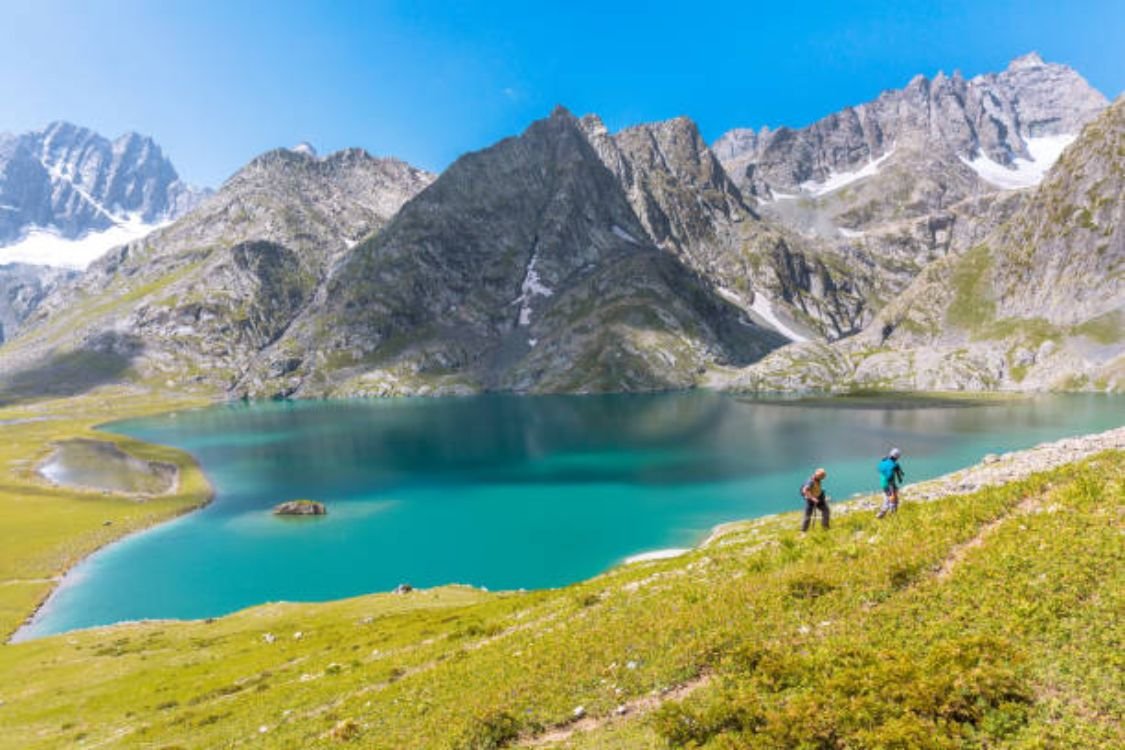
Difficulties Of Kashmir Great Lakes Trek | Himalayan Daredevils
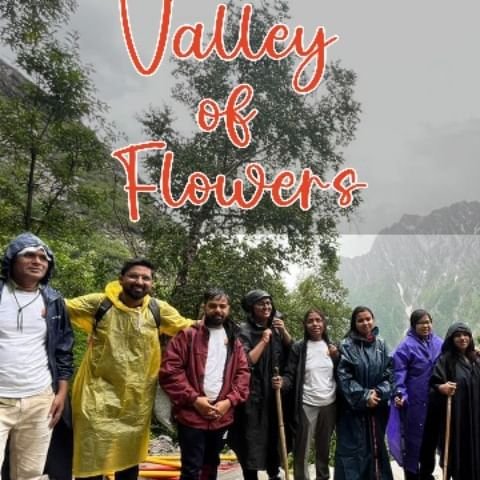
Explore the Beautiful Valley Of Flower Trek
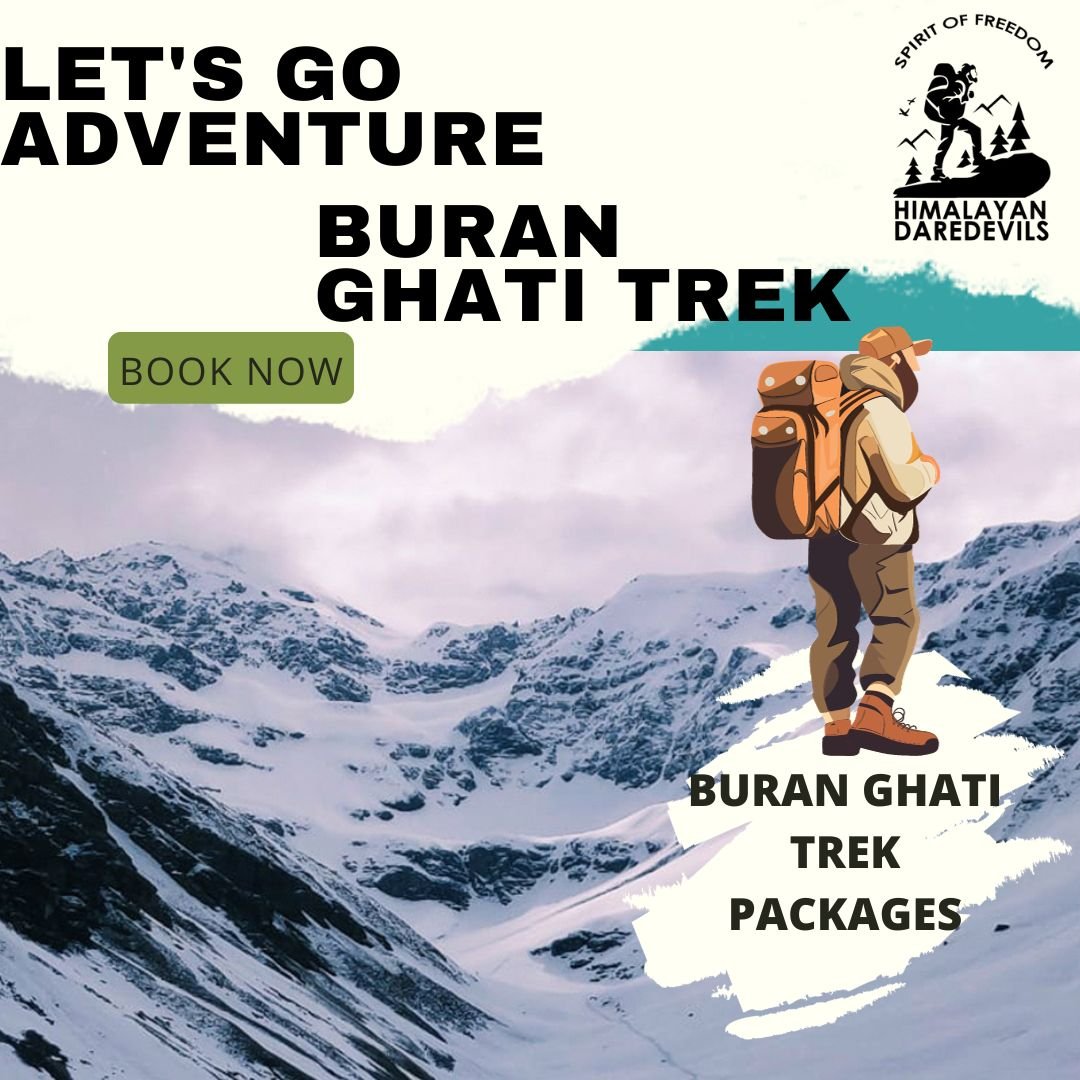
Buran Ghati Trek - A Hidden Gem - Complete Guide
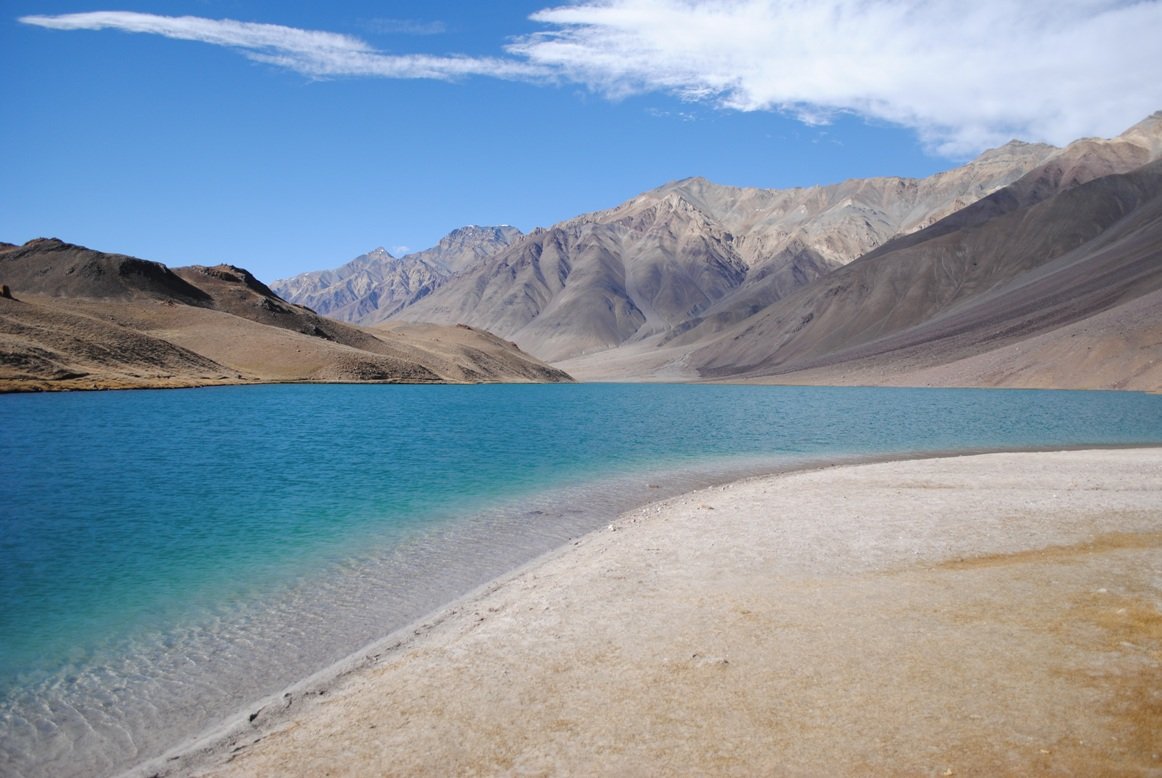
10 of the Best Himalayan Treks You Must Do
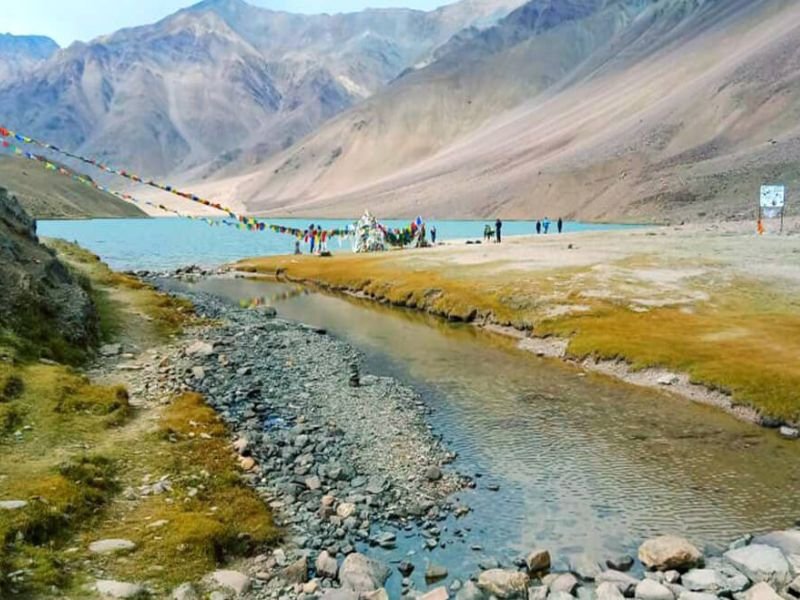
How To Choose Your First Himalayan Trek
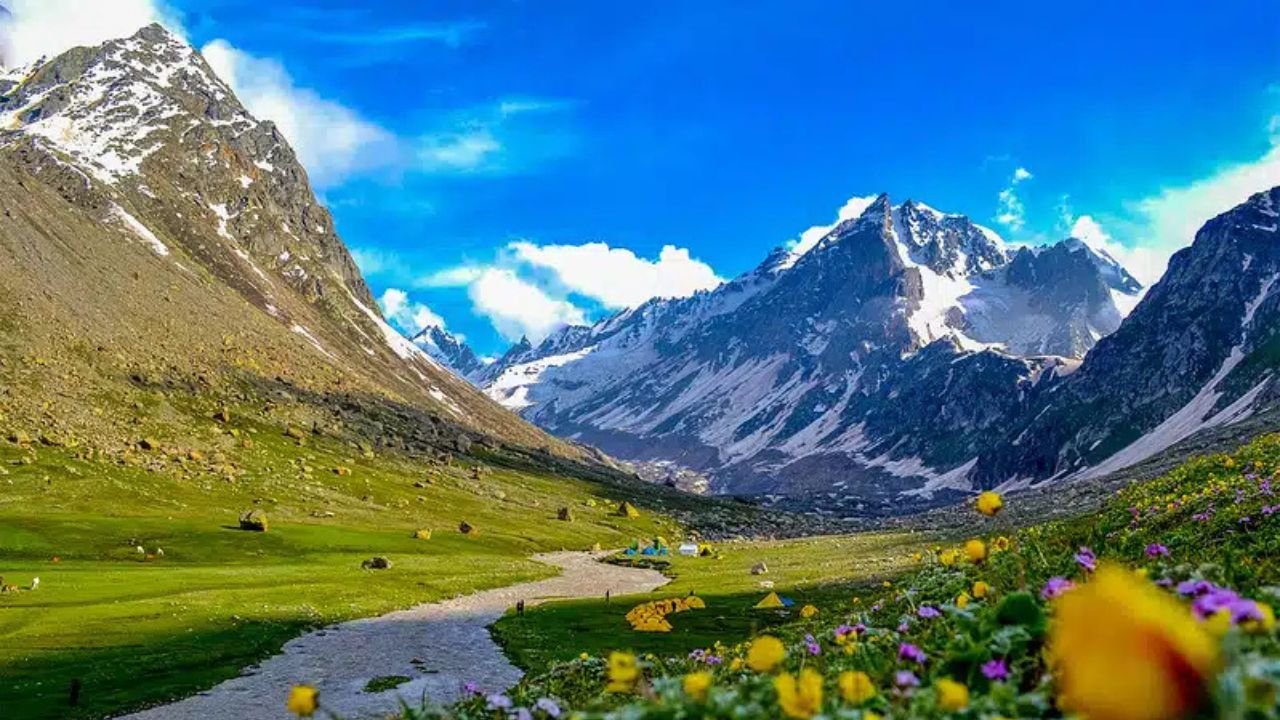
The Most Surprising Trek of Hampta Pass and Chandratal Trek
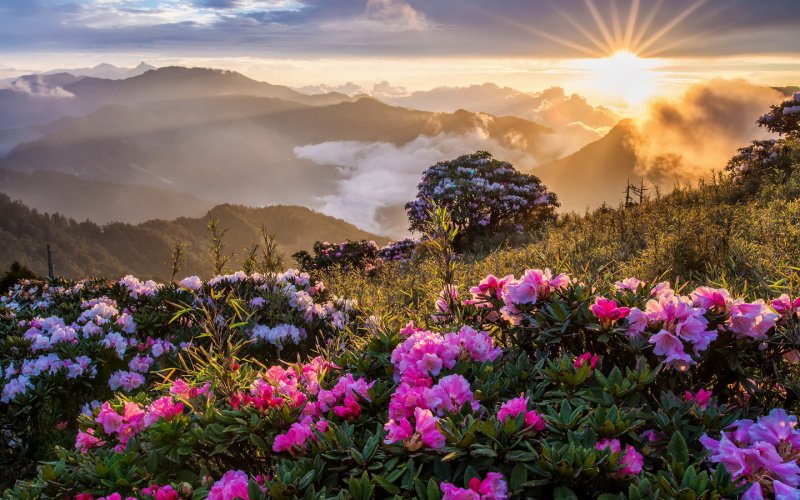
Best Time to Visit Valley of Flowers Trek

Hampta Pass Trek- Experience the Thrill of Crossing the Himalayas

Best Tips for Hiking in the Rainy Season Safely and Enjoyably
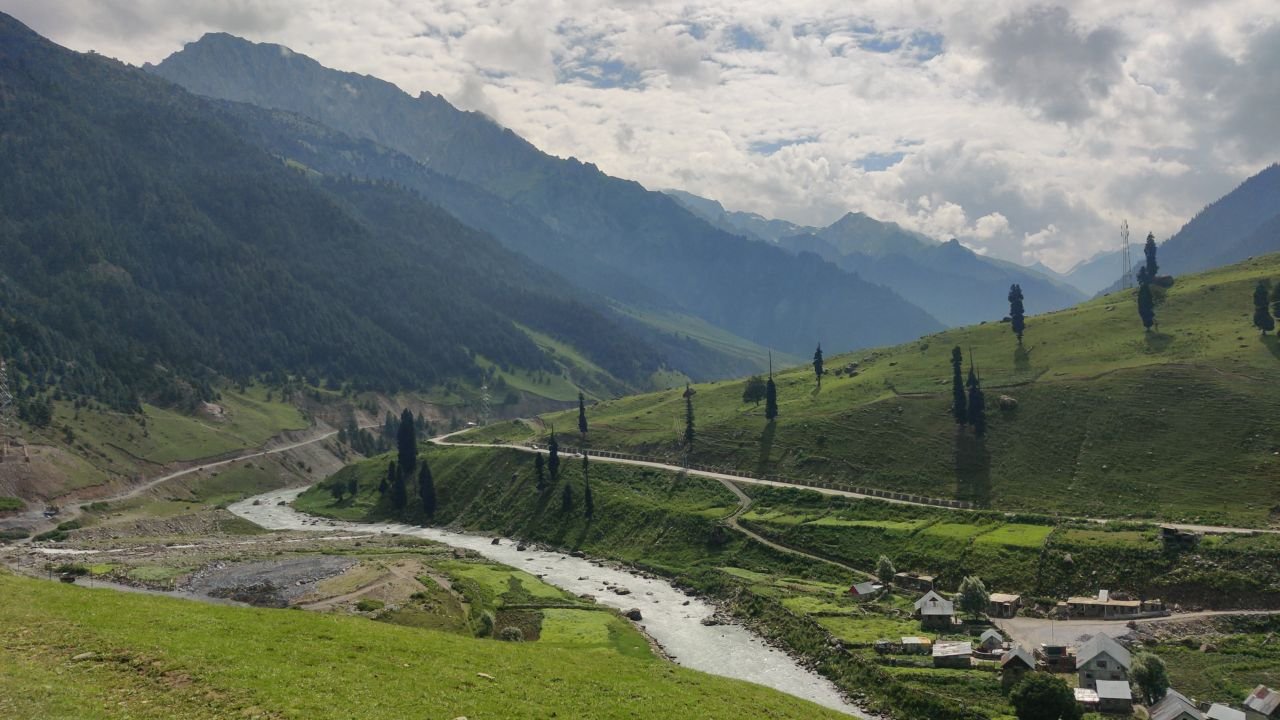
Kashmir Great Lakes trek: Detailed Itinerary, Trekking Essentials & More
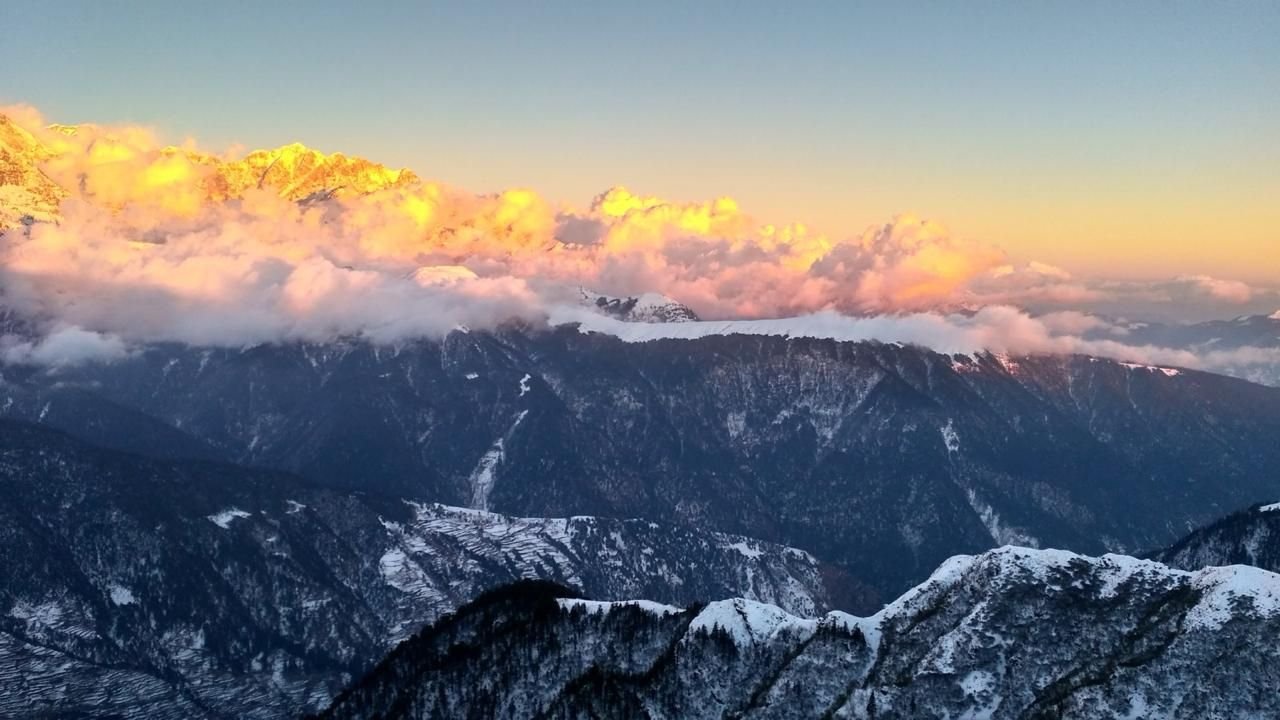
Complete Guide to the Brahmatal Trek Route and Itinerary

Valley of Flowers Trek Complete Guide: Itinerary, Tips & More
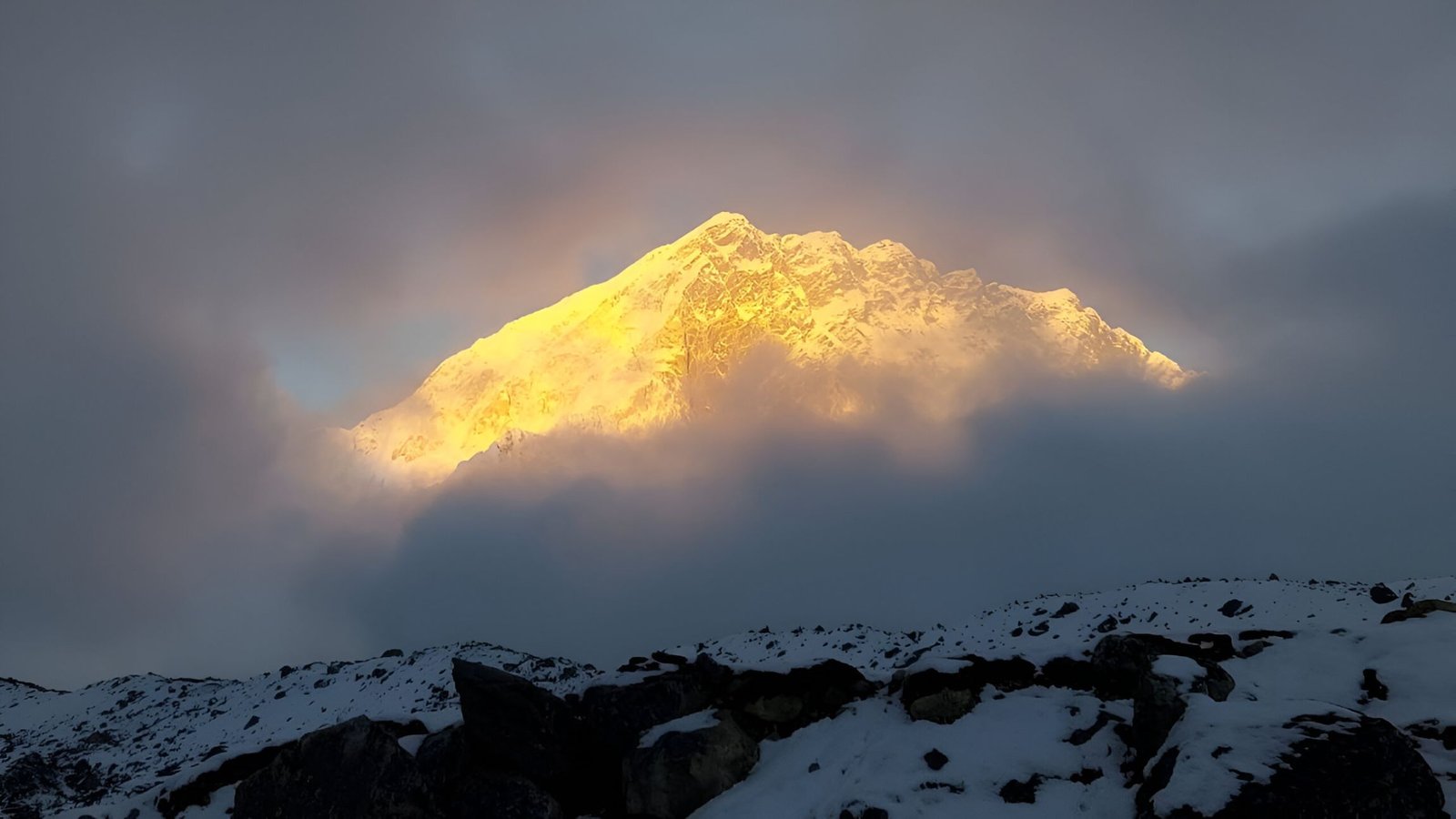
Everest Base Camp Trek: Guided vs Solo Experience
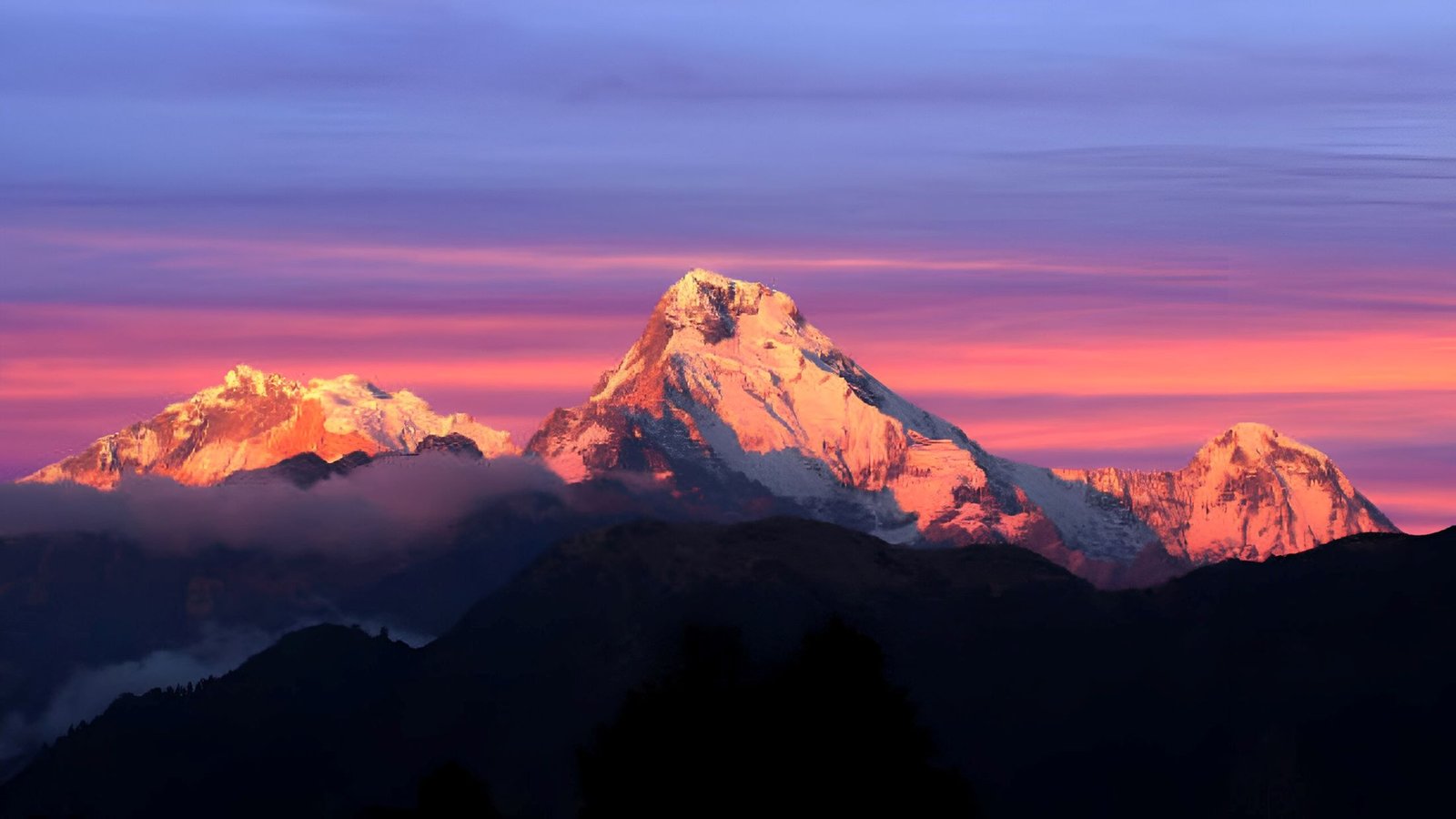
Top 7 Mistakes to Avoid During Annapurna Base Camp Trek

How to Pick the Perfect Kedarnath Travel Package for Your Next Trip
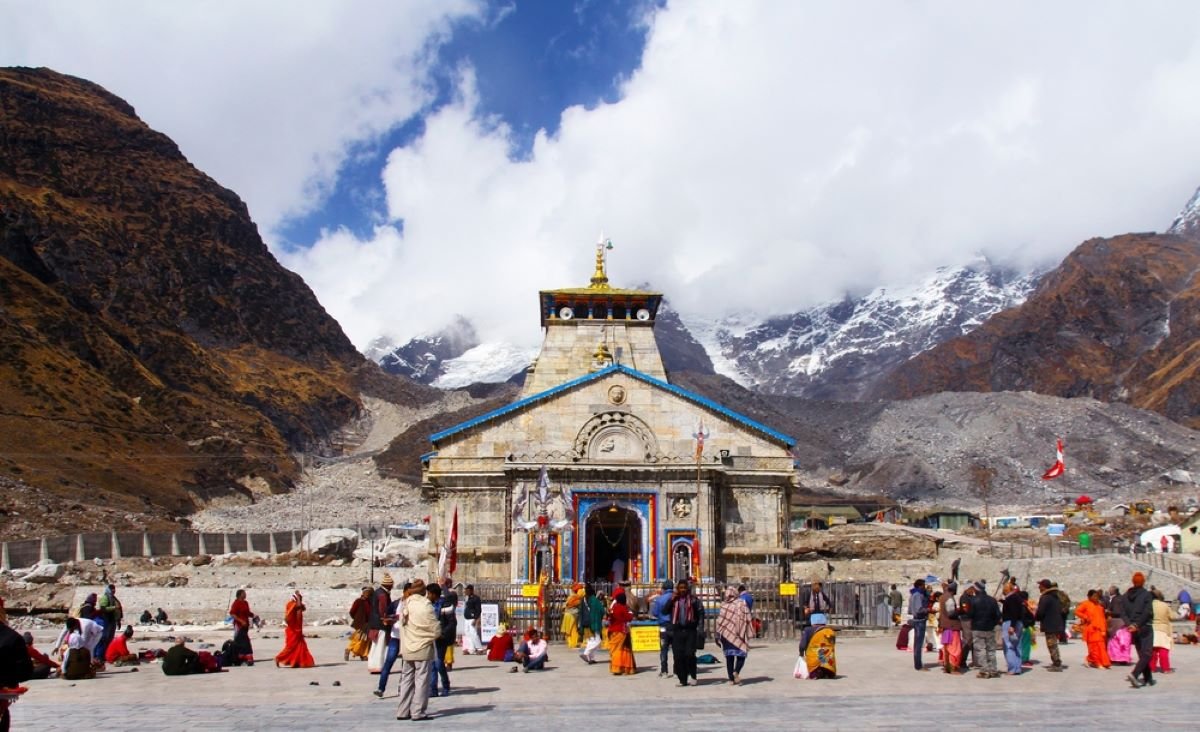
Kedarnath Temple Yatra Experience- A Complete Journey Guide

What Makes the Kashmir Great Lakes Trek Unforgettable

Best Summer Treks in Himalayas- Top Picks for 2025

Hampta Pass Trek to Chandratal: A Journey That Stays With You

How Long Is the Kashmir Great Lakes Trek & What Can You Expect

Kashmir Great Lakes Trek – A High-Altitude Journey to Remember
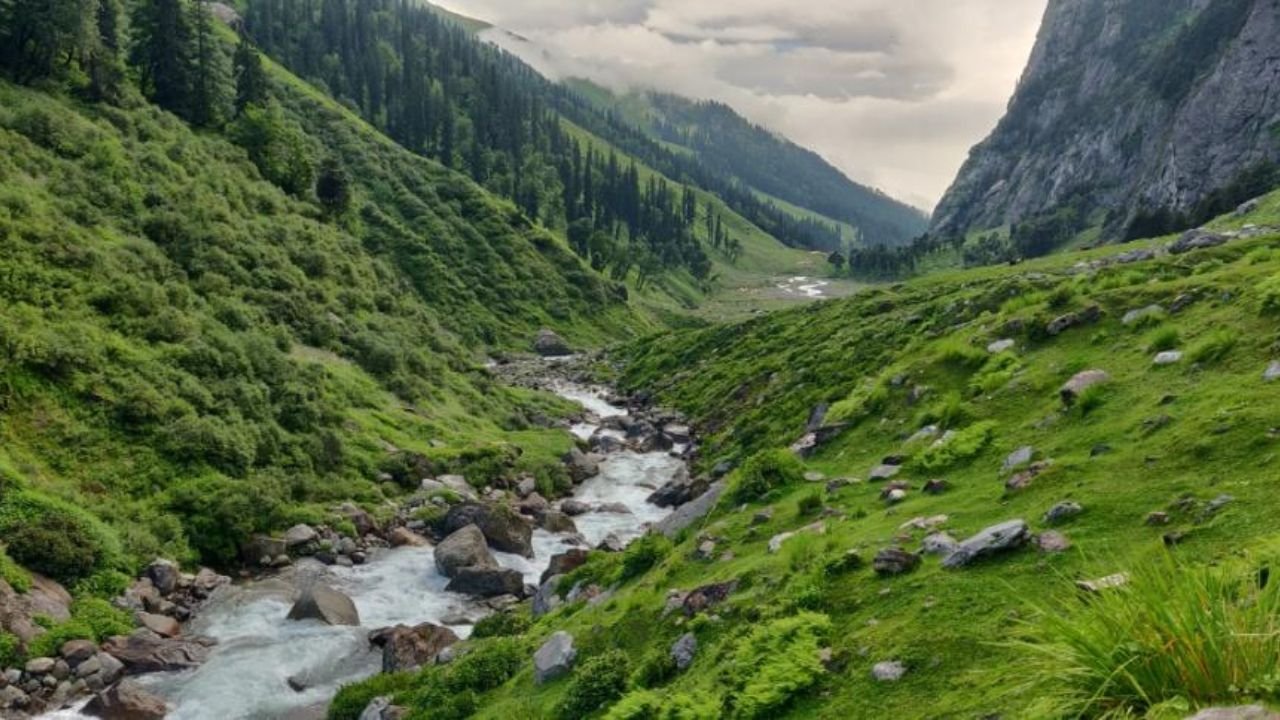
Hampta Pass Trek: Know The Route and The Package Before You Go
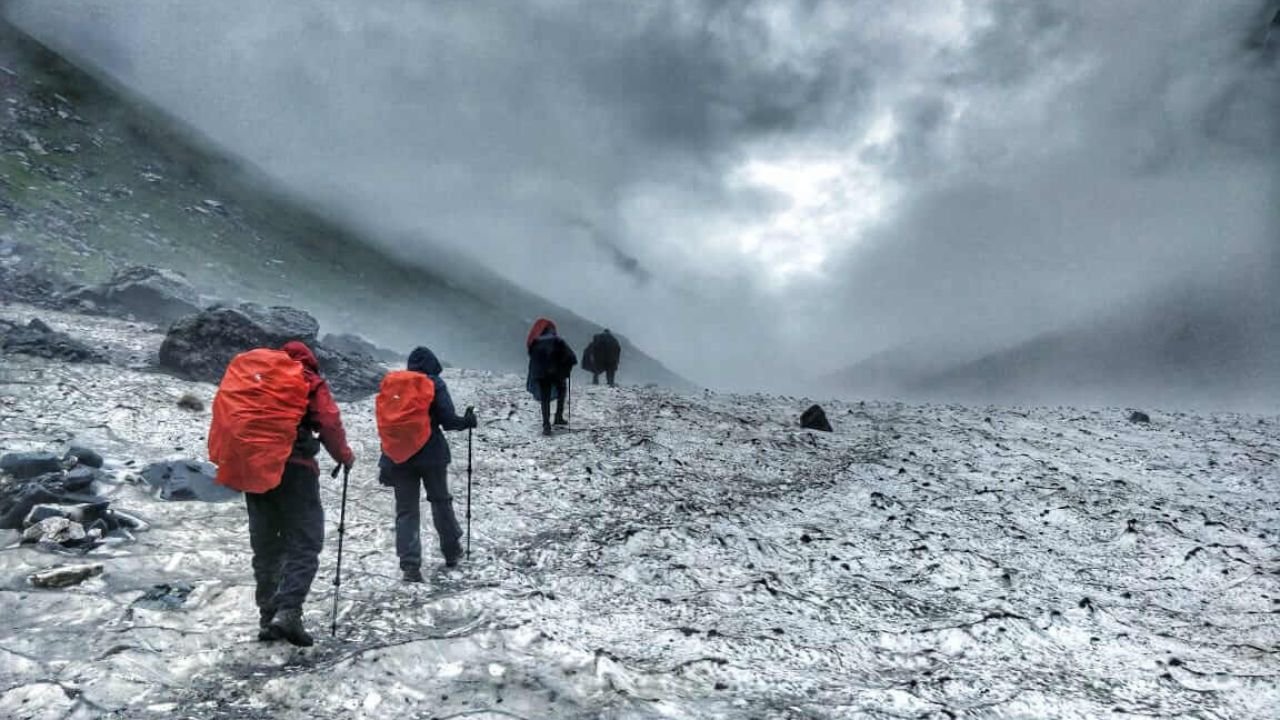
Hampta Pass Trek - How Long Is It? And The Best Time To Visit
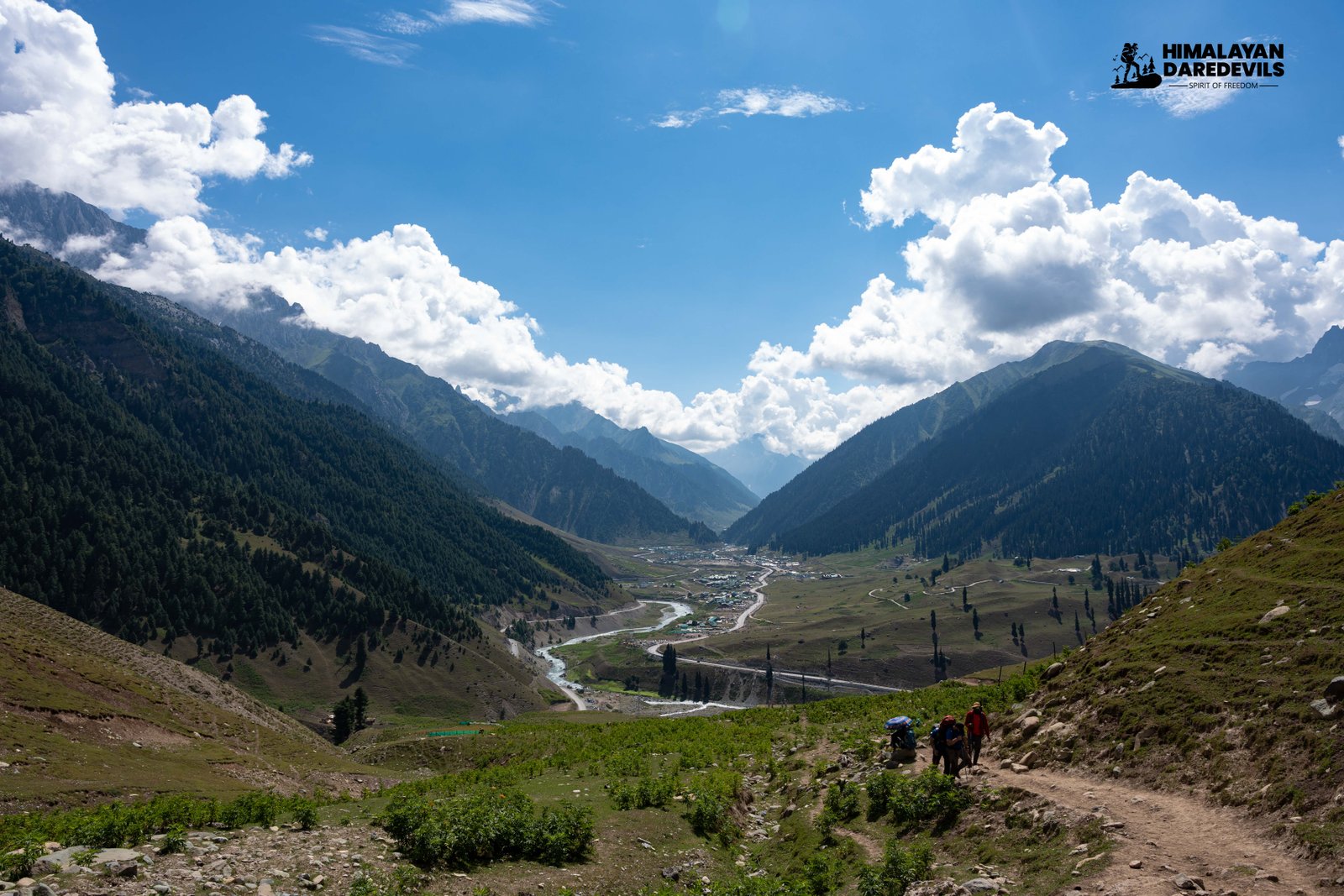
Kashmir Trek Comparison: Kashmir Great Lakes Vs Tarsar Marsar

Fitness Mistakes That Can Ruin Your High-Altitude Trek

11 Must-Do Himalayan Monsoon Treks in India (July-September)

Essential Trekking Gear for Kashmir Great Lakes Trek
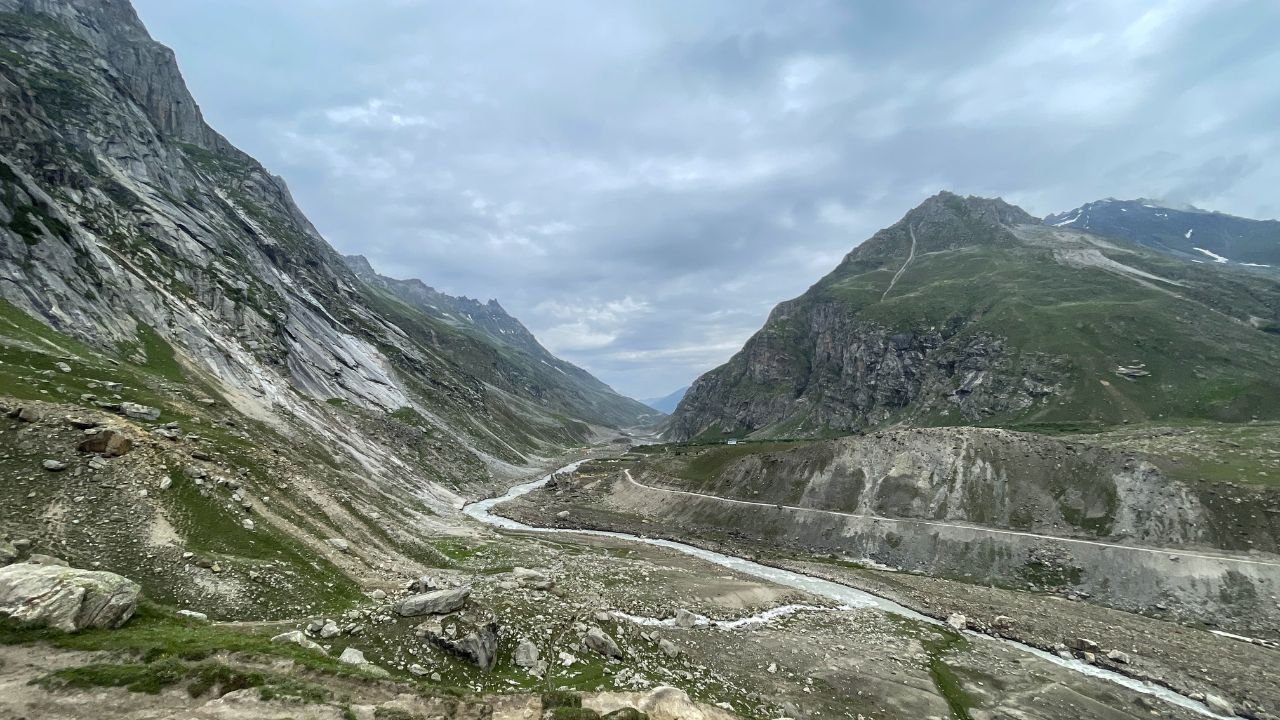
Key Highlights of the Hampta Pass Trek You Shouldn’t Miss
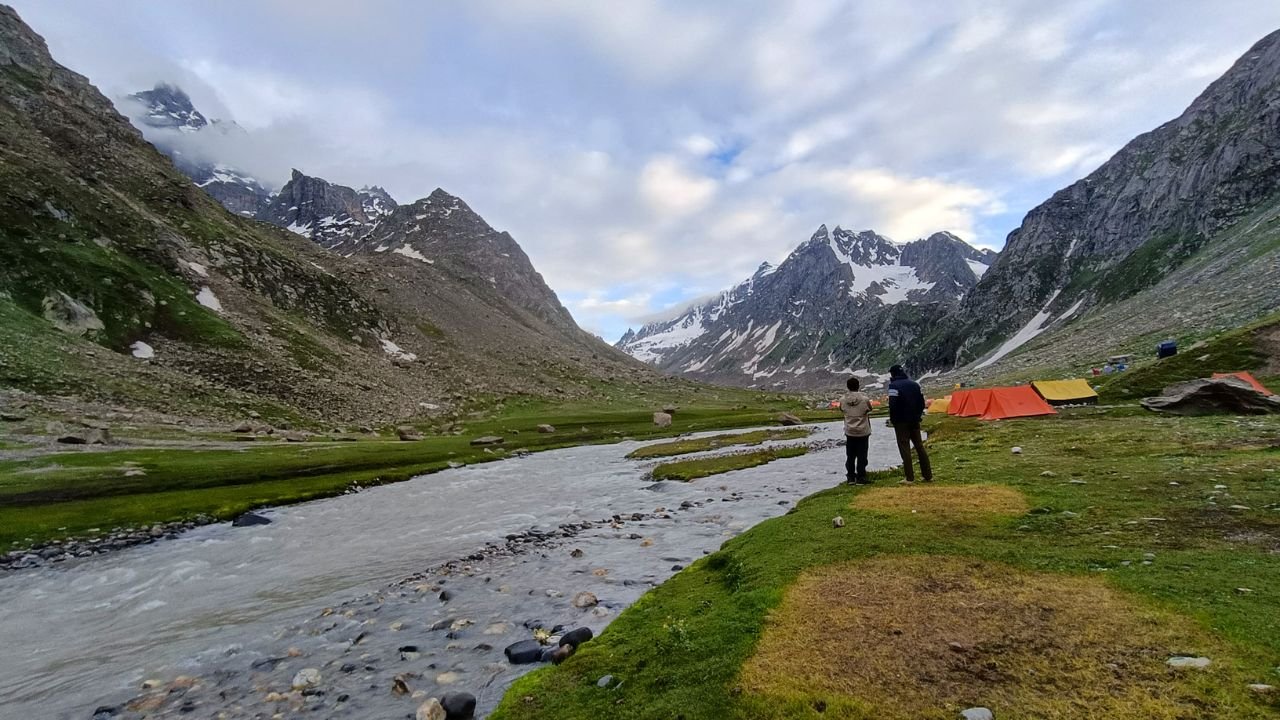
Hampta Pass trek: Detailed Itinerary, Trekking Essentials & Best Time to Visit
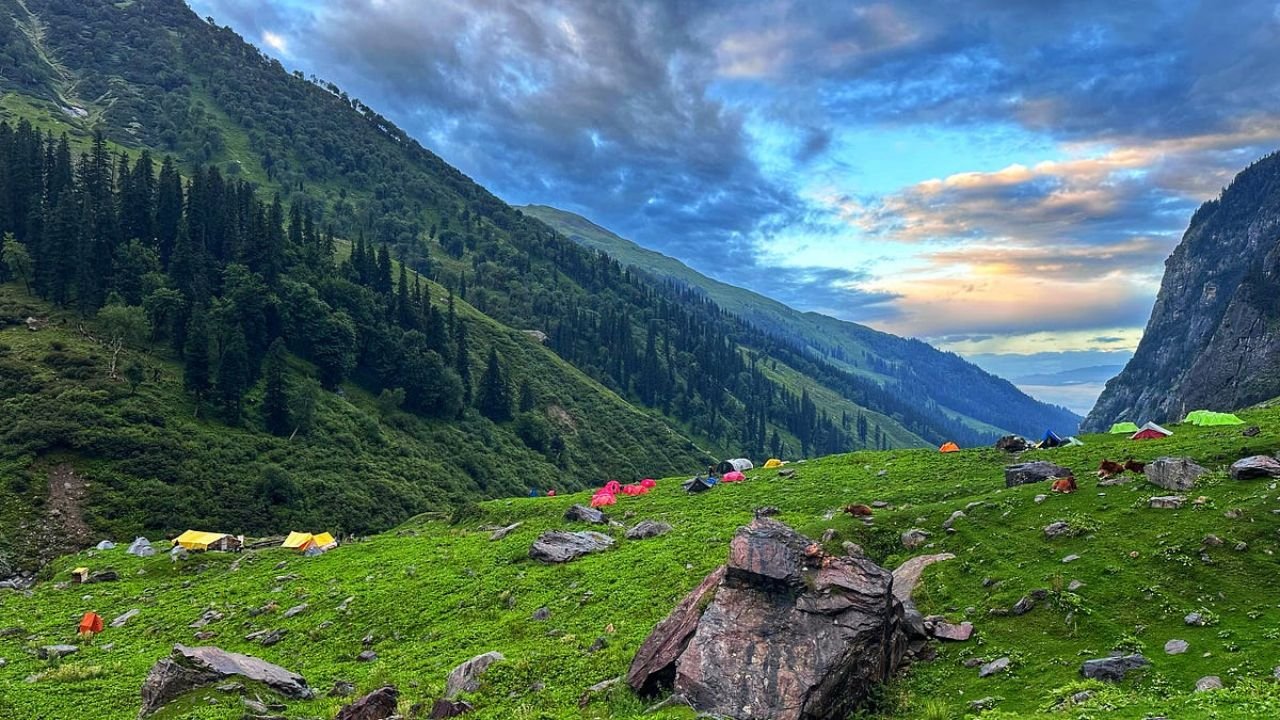
How to Get Fit for the Hampta Pass Trek

How to Train for the Kashmir Great Lakes Trek: Daily Routine Guide
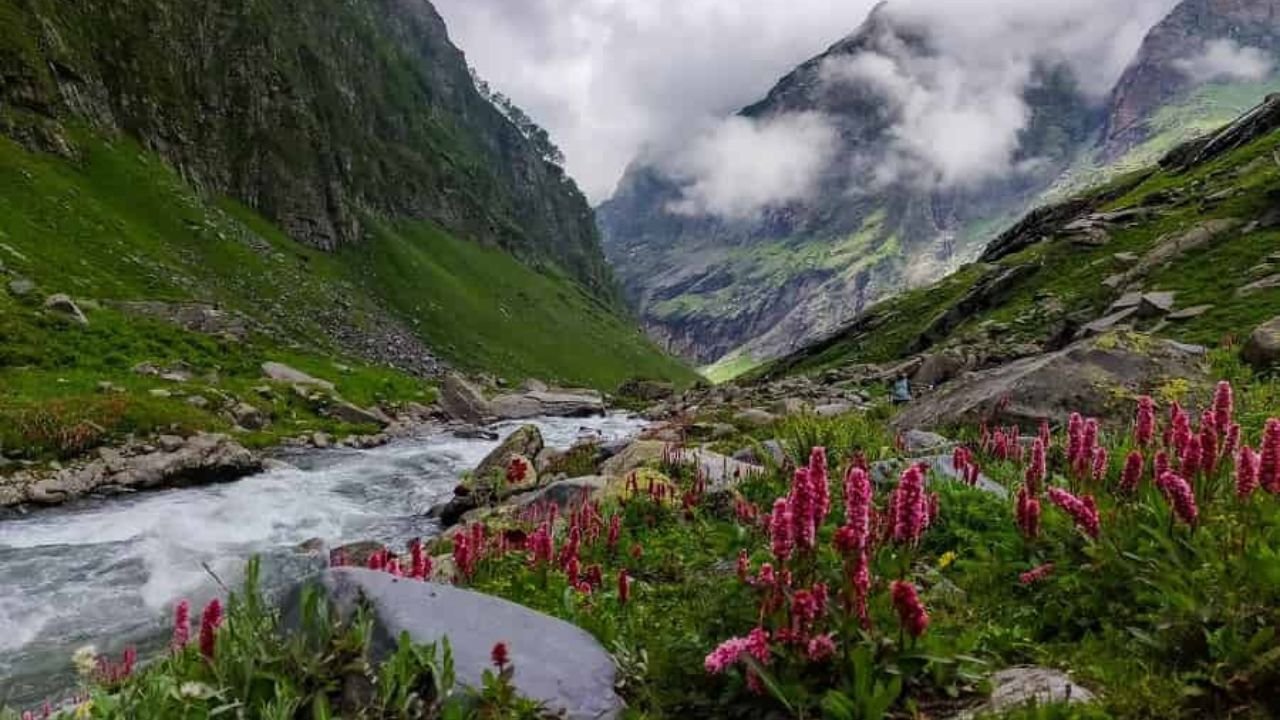
Best Time to Experience the Real Beauty of Hampta Pass Trek
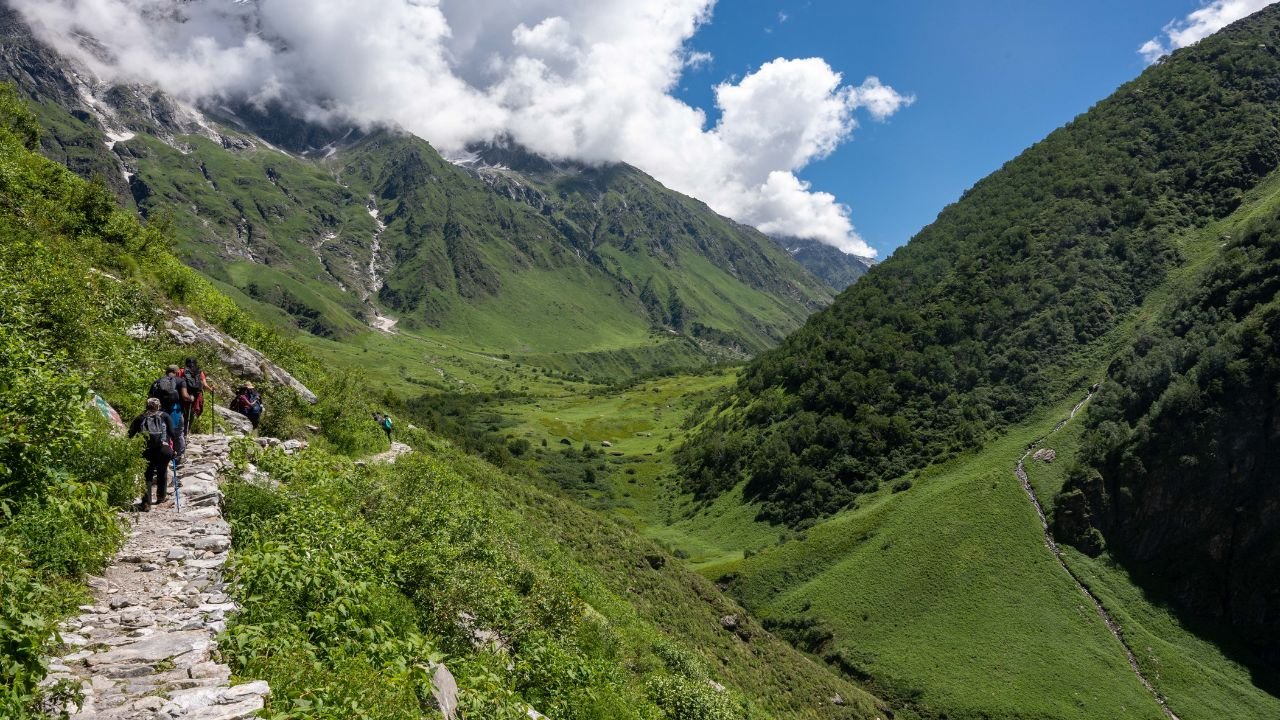
Valley of Flowers Trek- What It Gives and What It Doesn’t
